Yachting World
- Digital Edition


The Race to Alaska: answering the call of the wild
- Nikki Henderson
- October 23, 2023
Nikki Henderson braves grizzly bears, whales, whirlpools and ferocious winds to take part in the unique Race to Alaska

“Nikki, give up the tiller for a second. You gotta see this.” Ev Goussev, co-owner of the yacht Gray Wolf , shoved the binoculars in my hand. “Just there. That beach. That’s bear territory, for sure.” A shady stretch of sand lay a quarter of a mile to our starboard during the Race to Alaska. Looking through the lenses, I could see the tide gently rippling past the remains of old logs and bracken washed up on the shore.
Scanning left and right to see if there was any life out there, I almost got lost among the trees. So many trees, so thick, so old – so untouched by humankind. For sure, this place was inaccessible by land. Beyond it were hundreds of miles of dense forest, grizzly bears and uncharted wilderness. I guess some people might view this a desolate wasteland. I’d describe it as an untainted paradise. I wondered how many people had even seen this beach.
Meanwhile, with a dying wind, we were struggling to make headway against the 2-knot ebb. From recumbent bike seats at the transom, crewmembers Maisie and Andy were toiling on pedal drives connected to propellers at the stern of Gray Wolf , a replacement for the removed Beta engine.

The Race to Alaska starts at Port Townsend, British Columbia, and runs 750 miles to Ketchikan, Alaska
Gray Wolf is Jeanne and Ev Goussev’s family boat, a 40ft monohull built in 1995 from cold moulded cedar by Lyman-Morse in Maine. She has an unstayed rig we affectionately referred to as ‘the tree trunk’, a tapering, hollow stick of hand-laid carbon that bends in the wind like a branch so that she depowers her square-topped main independently, increasing twist and spilling air on each puff. Just over a tonne of water ballast adds a little extra when it starts blowing.
The Race to Alaska – the R2AK as it is known – is a 750-mile adventure race that takes place annually in early June. Jake Beattie, executive director of the Northwest Maritime Centre, and some pals came up with the idea late one night during the Wooden Boat Festival in Port Townsend, Washington. “Imagine if we challenged people to a race from here to Alaska,” he mused. “And Rule Number 1: no engines.”
Like many good ideas, its absurdity made it irresistible.

Grizzly bear standing in the morning mist in British Columbia: the Race 2 Alaska passes remote areas of deep forest. Photo: Alamy
In 2015 he launched the first edition. Expecting only a couple of people crazy enough to sign up, Jake planned the opening party at his house in the woods. He lit the bonfire, put on a pot of chilli, and waited for a handful of people to show up. But something about the race inspired people. That first year 39 teams entered.
Jeanne Goussev called me to say she was doing the R2AK again. “Come with us,” she added.
Jeanne and I met in Seattle back in 2018, having just sailed in from China with the Clipper Round the World Race . We became friends and the following year I joined her The Race to Alaska Team ‘Sail Like a Girl’. In Jeanne’s words: “People do this race because they are running away from something or running towards something.”
After the intense responsibility of skippering a team in the Clipper Race, I was looking for a less regulated, more light-hearted adventure. That year, we finished 4th on her Melges 32, Maks to the Moon .

Monkey Fist crew using pedal auxiliary power. Photo: Joe Cline/R2AK
Yearning for adventure
Now I was back again, and mainly because of the community atmosphere. The Race to Alaska attracts people who have a lightness of spirit and a yearning for adventure.
The team for the 2023 Race to Alaska were Jeanne and Ev Goussev, local racers Lindsay Lind and Remy Lang, liveaboard cruiser John Guillote, R2AK veteran Maisie Bryant, windsurfer Andy Kleitch, and me.
Knowing it could be anything from five days of fast sailing to 15 days of pedalling if winds were light, Jeanne and Ev put together the team carefully. We had enough racing and offshore experience to navigate the course safely and competitively, but also have a laugh.
Two-stages of the Race to Alaska
The race is split into two stages. The first is known as ‘The Proving Ground’ and is a qualifying leg designed to filter out ahead of the 750-mile main event any vessels and crews that aren’t seaworthy.
At 0501 on Monday 5 June the starting cannon fired for the first 40-mile stage. It was hard to hear over the Red Army Choir’s rousing rendition of the old Soviet National Anthem blasting through the speakers (apparently that’s still funny in formerly Russian Alaska).
To starboard, the sun was rising over the Cascade Mountain Range, and to port the full moon was still visible, setting above Port Townsend. The aroma of bacon and eggs (my British contribution) wafted up from down below.

On board Gray Wolf at a busy start. Photo: John Guillote
Immediately, we were playing a game of chess with our fellow competitors in a fleet that included kayakers, rowing boats, monohulls skippered by solo sailors, trimarans and a wing foiler. Ev and Jeanne were bickering (co-skippering with your spouse is hard) about whether to stay left or right of the exclusion zone in the middle of Puget Sound.
The tension was broken as we very nearly ran aground the wrong side of a red buoy, but we arrived in Victoria before lunch, less than an hour ahead of a solo kayaker.
The start of Stage 2 is from Victoria, British Columbia, to Ketchikan, Alaska. There is just one waypoint: the tiny and remote town of Bella Bella in Northern BC. Any teams that traverse the 40 miles north of the ‘Proving Ground’ course, from Washington to Canada, within the allotted 36 hours without getting rescued go on to qualify for this stage.
Competitors must rely solely on wind or human power for propulsion. Disabling your motor is not an option; even inboard engines must be removed. No exclusive support is permitted, but anything that would be available to all competitors is fair game, so if you get hungry and fancy going ashore for a Big Mac or a craft beer, it’s OK.

Everything from kayaks to paddleboards take part in the adventure. Photo: Joe Cline/R2AK
You can borrow a can of bear spray from a hunter in the forest, or make friends with the guy down the dock with a welding shop in his garage (yes, these people exist up there and can fix up your steering quadrant as you go) but you can’t have a support crew standing by on shore. Disqualification is the penalty for poor sportsmanship. If a lawyer needs to be consulted for any reason, you’re automatically disqualified.
The event is somewhat anarchic, but the Race to Alaska manages to retain just the right balance of wit, responsibility and humility to be taken seriously. And rightly so. Fellow R2AK veterans, among them world record holders, Vendée Globe sailors and athletes, can all agree that navigating this route in late spring is no joke.
Some years, northerlies blow straight down from Alaska’s glaciers. These icy winds funnel through the mountains, accelerate off every headland and churn up the shallow waters of Hecate Straits into an almost impassable short, sharp chop. This forces the fleet inshore to endure relentless tacking marathons to snake up the inland waterways, most of which are barely more than a mile wide.

Humpback whale off Vancouver Island. Photo: HP Canada/Alamy
On other years, a Pacific depression might pass north and bring with it warm southerlies and powerful fronts. Thick sea fog can cloak the entire course as the warm southerly air flow meets these waters, still cold from winter. Competitors then have to blind-navigate the rocky shores, dodging partially submerged logs (a by-product of the logging industry), turbulent rapids, and currents exceeding double digits without actually being able to see much beyond the bow of their boat.
Don’t break the law
To make Gray Wolf race-ready, Ev had removed her Beta engine and wired up an EFOY fuel cell, which uses ethanol. He built a frame on the transom, added two recumbent bike seats and connected pedal drives to a couple of three-blade baby bronze propellers. They’d be more efficient than oars, and we’d use them when the boat speed dropped below 3 knots. Faster than that, they’d create more drag than propulsion.
For our team name we chose ‘We Brake for Whales’, an environmental message with a nod to the TV comedy Braking for Whales.
Stage 2 began on the pavement above the Victoria Inner Harbour Docks, a Le Mans-style start just before noon on 8 June. We were reminded of the main rule: “Don’t break the law”, and given a few final words of guidance: “Watch out for bears. Avoid the logs.”
Then, after a “3, 2, 1 Go!” everyone rushed down the steps to their boats and set off in a competitive frenzy. Hoisting sails is forbidden in Victoria Harbour, so after the sprint starts there was half an hour of chaos as 25ft monohulls with 20ft of oars vied for water with trimarans, our 40ft yacht, local ferries and even float planes.
Strategically, the race is fascinating. There’s just one compulsory waypoint among the myriad islands, so the route options are endless. Heavy tides create frequent opportunities for the fleet to restart. It’s a nailbiter all the way to the finish.

Gray Wolf is a 40ft one-off design built by Lyman-Morse that was modified for the event including removing the engine. Photo: John Guillote
Inside or outside?
The first big decision is whether to go outside or inside Vancouver Island. You have to weigh up whether to turn right out of Victoria and head for the consistent winds offshore, or turn left and risk light air, rapids, and logs in search of flat seas and better wind angles. This remained a theme for the entire course: weave through narrow waterways or brave open water.
Our priorities were safety, fun, fast sailing, and the spirit of R2AK – in that order. So we opted to sail inside Vancouver Island. We applied the same logic throughout the whole race, ducking inside when the wind was heavy and poking our noses outside when it dropped off.

Author Nikki Henderson on the bow. Photo: John Guillote
The most notorious divider of the fleet falls 180 miles after start. Seymour Narrows is a three-mile section of Discovery Passage, cutting between the mountains of Vancouver Island and mainland of British Columbia. The tidal streams here can exceed 15 knots.
Some 36 hours into the race, we were gybing up Campbell River, 10 miles south of Seymour Narrows looking for the safest way to wait out the tide. Do we anchor or hook a mooring buoy? Do we dock alongside a pontoon? Mid-discussion, the Navionics track showed us sailing a reciprocal COG. With no real plan or preparation, we slipped towards the nearest shore and threw the anchor over the side.
Before I did the race, I’d read reports of the ‘crazy’ tidal waters and put it down to hyperbole. How wrong I was. As we sipped bourbon waiting for darkness to fall, a whirlpool appeared just 50m away, and its centre was at least a metre lower than the surrounding water.

The rare spectacle of a pod of humpback whales bubble feeding. John Guillote
The entire length of the course is bordered by rugged mountains, which plunge underwater as steeply as they soar into the sky. The submarine cliffs and fast tidal flows paint mesmeric patterns of swirling lines on the surface of the water, and fork out tributaries that run like rivers.
Sailing these waterways is like running along a highway on the wrong side of the road, but the oncoming traffic is in the form of logs. A head-on collision with some of these would end your race, if not sink the boat. “Keep watch at all times” is a rule respected even by crazy adventurers.

Vancouver Island’s inside passage. Photo: John Guillote
A rugged passage
In the middle of this turbulence, we lifted anchor then cycled 15 miles on an inshore eddy to sneak through Seymour Narrows in the dead of night.
The moment we poked our noses out of the lee of the cliffs, the prevailing 25 knot winds hit us head on and smacked us sideways. Johnstone Straits is the race’s next challenge: a 100-mile long intestine of water that competitors must navigate in order to round Cape Caution and make it back to open water. Seymour Narrows divides the fleet, but the Straits can destroy it.
Ferocious winds funnelled down the mountains and decimated our competitors. The short head sea was particularly punishing for the multihulls. Many of the lightweight tris suffered structural damage. Exhausted short-handed crews were forced to stop and rest at anchor. A couple of boats hit rocks. After 24 hours and 63 tacks, we made it through battered, bruised but in one piece.

Ev and Nikki deliberate how to navigate light winds on the approach to Ketchikan. Photo: John Guillote
The latter 350 miles of the R2AK is more of a rugged voyage. The course widens and boats disappear from sight of one another as you sail into the wilderness. You are out there in bear territory.
By day four, we were resting up in anticipation of a gale that was forecast to blow in by dinner time.
Suddenly someone shouted: “Whales. Everyone wake-up!” I scrabbled on deck to see a pod of humpbacks bubble-feeding nearby. Perhaps 10 of them, together with their babies, were blowing air up and swimming around in circles. We huddled on deck to watch. The whales dived, the water settled, then they reared out of the water, mouths open wide as they fed in unison.
As is often the case, the further you get from civilisation, the closer you draw to the people around you. There’s a richness of memories in the smaller moments as well as the grand experiences.

Party atmosphere and a slightly anarchic vibe are traits of the R2AK. Photo: John Guillote
Our race ended by ringing the winners’ bell together in Ketchikan, damp, and slightly bruised. Opening the cast iron wood burning stove of Ketchikan’s local fish house, race director Jesse Wiegal pulled out the winner’s prize, $10,000 nailed to a log (there is only one other prize, a set of steak knives for 2nd place). Before handing it over, he asked us to describe the Race to Alaska.
Ev, not often a man of brevity, answered with just one word: “Adventure.”
For some the R2AK adventure begins with building a boat in their backyard. Yet others see the challenge as an individual physical test, perhaps to completing 750 miles on a paddleboard, pitching camp every night and keeping watch for grizzly bears.
We hadn’t defined our adventure before we set out. And maybe that’s the key: to embark on a journey without really knowing what you’ll find.
If you enjoyed this….
Yachting World is the world’s leading magazine for bluewater cruisers and offshore sailors. Every month we have inspirational adventures and practical features to help you realise your sailing dreams. Build your knowledge with a subscription delivered to your door. See our latest offers and save at least 30% off the cover price.

- Boats & Gear
- Instructional
- Cruising Stories
- Cruising Destinations
- Race Results
- Race Reports
- Racing Technique
- Submit a Classified Ad
- Boats for Sale
- All Classifieds
- Terms & Conditions
- Your Dashboard
- Seattle Area Racing Calendar (SARC)
- 48° North Cruising Rally
- Croatia Flotilla
- The Race to Alaska Documentary Now Available for Streaming
Now ready to stream nationally from the warm and dry comfort of home, the Race to Alaska movie captures the spirit of this wild adventure up the Inside Passage.
Called “The best worst idea”, this is the true story of the Race to Alaska , the wildly challenging 750-mile engineless boat race from Port Townsend, Washington to Ketchikan, Alaska using only wind or human power. Racing through one of the most complex waterways in the world, amateur adventurers face 15 knot currents, gale force winds, cold water, deep water, whirlpools, logs, bears, chilly temperatures, fatigue, and endless unknowns.
The prize for first place? Ten grand nailed to a log. The prize for second? A set of steak knives. For third? The satisfaction of finishing…
Directed by Seattle-raised Zach Carver, The Race to Alaska documentary explores the extreme and impressive individuals who accepted this utterly unique challenge with jaw-dropping camera footage and a surprising amount of humor. From the quirky to the sublime, from Olympic athletes to high schoolers, the characters in this film show that there’s no one way to do the hardest thing you’ve ever done.
Mixing raw, first-person footage with vast aerials and in-depth interviews, it tells the story of the race’s improbable inception and the epic journey of those who answer its call. From an all-female team, to the laid back, reggae-inspired “Bunny Whaler” crew, to the stubbornly solo stand-up paddler, you’ll be on the edge of your seat rooting for these unlikely heroes.
Watch the trailer:
STREAM THE RACE TO ALASKA Running Time: 98 mins | Unrated Directed by Zach Carver Presented by Blimp in association with Untethered Productions
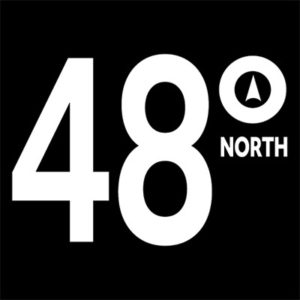
48° North Editors are committed to telling the best stories from the world of Pacific Northwest boating. We live and breathe this stuff, and share your passion for the boat life. Feel free to keep in touch with tips, stories, photos, and feedback at [email protected].
Boat Maintenance & Repairs , Featured
Three Sheets Northwest: The Drawers of Perception
May 14, 2024

Boating Lifestyle , Featured
#TBT: A Love Letter to Fair Weather Sailing
May 9, 2024

Featured , Cruising Technique
Ready… Go! Jumping Off for Extended Cruising

Racing , Featured
Human-Powered SEVENTY48 Race Setting Off from Tacoma May 31
May 8, 2024
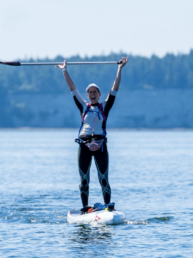
Cruising Stories , Featured
Close to the Water: Looping the Island
May 7, 2024
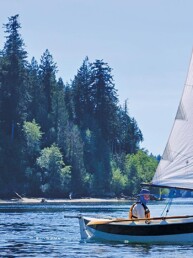
Boating News , Featured
Lakebay Marina Redevelopment Project Asking For Boaters’ Input
May 6, 2024
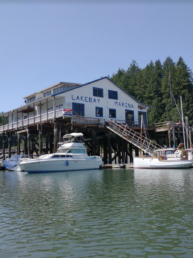
- Skip to main content
- Keyboard shortcuts for audio player
The Race to Alaska is 750 miles, on a boat, with no motors and no support

Ayesha Rascoe
This week, nonmotorized boats are competing in an annual 750-mile race from Washington to Alaska. Ayesha Rasco speaks to competitor Janice Mason.
Copyright © 2022 NPR. All rights reserved. Visit our website terms of use and permissions pages at www.npr.org for further information.
NPR transcripts are created on a rush deadline by an NPR contractor. This text may not be in its final form and may be updated or revised in the future. Accuracy and availability may vary. The authoritative record of NPR’s programming is the audio record.
- AROUND THE SAILING WORLD
- BOAT OF THE YEAR
- Email Newsletters
- America’s Cup
- St. Petersburg
- Caribbean Championship
- Boating Safety

Race To Alaska The Hard Way
- By Jonathan McKee
- September 27, 2022
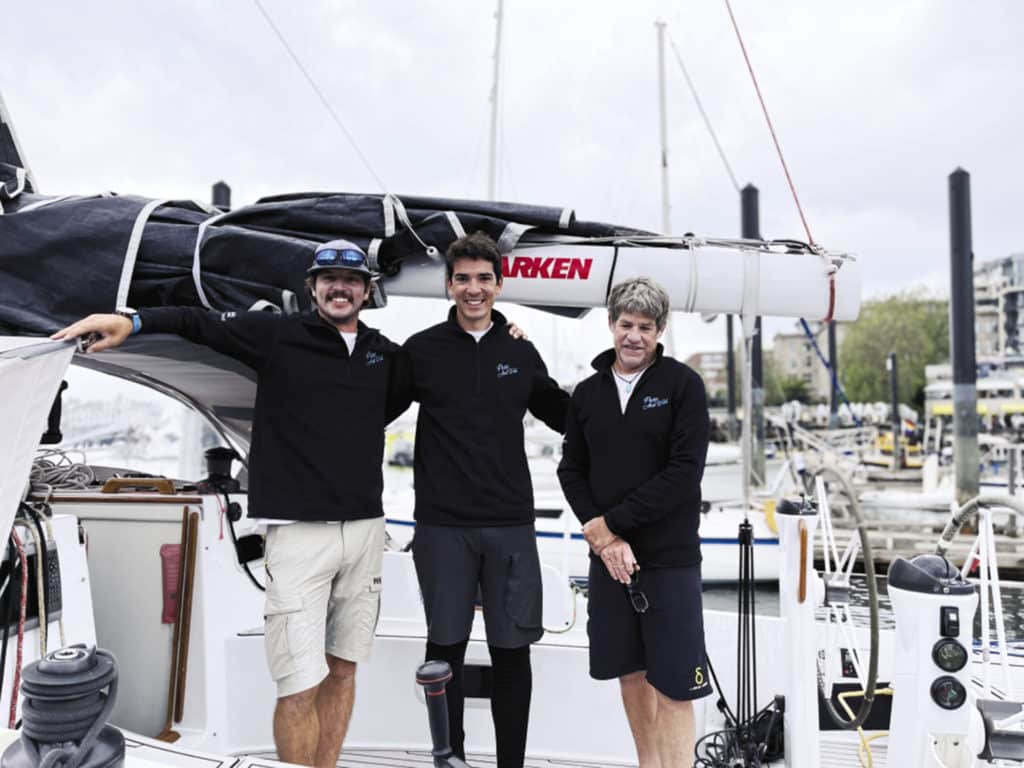
Through six editions, the 750-mile Race to Alaska has become one of the premier adventure races in the world. It attracts paddlers, rowers, sailors and adventure-seekers with this simple mandate: Get from Port Townsend, Washington, to Ketchikan, Alaska, using human power only. There are few other rules. The traditional route through the inside passage of Vancouver Island and north through the wilds of northern British Columbia has been plied by an incredible variety of watercraft, from high-performance racing sailboats to humble rowboats, paddleboards, kayaks and combinations of all.
The competitors are equally varied: Some come for the adventure, the opportunity to prove their endurance and skills over many days of extended exertion. Some think sails are the answer, although you still have to propel your sailboat through portions of the course. So, even the sailors are paddlers at some point. There are professional adventure athletes in the race, as well as high-level sailors and Olympic rowers, but the vast majority of these trekkers are normal people yearning to test themselves in one the most rugged and beautiful environments on the planet.
The 2022 edition had one significant change: Organizers allowed racers to go outside Vancouver Island on the way to the checkpoint at Bella Bella. This open-water option adds more miles, has less favorable current, and normally requires upwind sailing across more than 300 miles of North Pacific Ocean—one of the roughest stretches of ocean anywhere on the planet.
This new route caught my attention, so I entered my Bieker 44 Dark Star into the race. I have always wanted to test my boat in the open ocean, and the course had an instinctive appeal to me, with the mix of offshore and inshore, and the pure challenge of just getting there. Could we sail our boat quickly and safely to Alaska? I really love the spirit of this race, with few rules and a unique blending of cultures, so ambitious yet witty and humble at the same time. I also wanted this challenge to have a larger purpose, so we partnered with SeaShare (seashare.org), a nonprofit that stocks food banks across the country with high-quality seafood, much of it from Alaska. In its honor, for the race, we renamed the boat Pure and Wild .
As for any distance race, our preparations were extensive, from sails and sailing systems, to removing the diesel engine, to creating a human propulsion system, a power-generation system, etc. My original thought was to sail doublehanded, but after further consideration, I decided to race with three crew: Matt Pistay, a Race to Alaska winner, and rising star Alyosha Strum-Palerm. Together, with technical director Erik Kristen, they set about preparing for the race.
The pre-race plan fell into place one milestone at a time, and we won the Proving Ground qualifier from Port Townsend to Victoria, British Columbia, in rough conditions as many of our competitors, mostly fast trimarans, struggled. That was easy relative to what was to come. For the real race, we had to choose whether to take the more ambitious route outside Vancouver Island, which I strongly preferred, or play it safe in the confined (but still rough) waters of the Inside Passage.
As we paddled out of Victoria Harbor to start the race, there was no doubt in my mind that Pure and Wild would be turning right, to the open Pacific. Only three other larger monohull sailboats made a go of it. All the fast multihulls set off for the inside track. The decision proved decisive, but not for the obvious reasons. After 48 hours of racing, three of the trimarans, including pre-race favorite Malolo , had catastrophic collisions with floating logs and withdrew. So, the yellow brick road was opened to Pure and Wild , but we had our own challenges to overcome. Halfway up the west coast of Vancouver Island, I logged the following passages.
Friday, 6/17/22, 10:52 p.m. So far to go. It is dark and getting darker. And it is getting windier, slowly but surely. Our day on board Pure and Wild has been reasonably pleasant off the wild west coast of Vancouver Island, with a northwester of 14 to 18 knots. But the sea state has been building, the wind is up over 20, and now the waves on starboard are getting pretty steep. Between Alyosha, Matt and I, we had been taking one-hour shifts at the helm, with the second person on standby and the third resting. But as it was getting rougher, everything is getting harder. Suddenly, we had a bit on, moving up the course in worsening conditions. This might be the toughest part of the whole R2AK right here tonight.
Saturday, 6/18/22, 12:04 a.m. Storm is worsening. Trying to keep my s— together. Now it is really dark. I tell myself to just keep concentrating on steering the bucking bronco through the waves, keeping some kind of even heel angle. Try as I might to keep going, I admit I am pretty tired, and my focus is waning. I can’t get at the watch on my wrist because I have too many layers of clothes on. Need ’em all because big waves sometimes break over the bow, despite our freeboard. North Pacific water is a sobering 50 degrees F. I try to focus my fuzzy head for another few minutes, then decide it is Alyosha’s turn. A soft cry is all that is needed for his head to appear in the companionway. Soon he is beside me in the back of the cockpit. “Maybe think about the second reef?” The logic is suddenly obvious.
Of course, tucking in the second reef makes sense right now. Except that I am super tired, it is pitch black, and the waves are crashing pretty hard. But other than that…
I give Alyosha the wheel and ease the jib a little. Talking to myself again: “ OK, focus on doing this reef right. Lazy jacks on. Slack out of reef line. Halyard on the winch. Drop the halyard past the mark. Now the hard part. ”
I trudge up to the mast to haul the luff down and secure the tack. I give it all my weight, and the flapping sail slowly succumbs. Now the fiddly part. I need to feed the reef strop through the webbing on the luff. My hands are not working well, and the motion of the boat doesn’t help. Finally, I clip the snap shackle directly to the sail. Screw it; it will be strong enough, maybe. Back to the cockpit to tension the luff and grind on the leech reef line. I am getting really winded now! I still have to trim on both mainsheet and jib sheet. Afterward, I stand in a puddle of sweat and mental haziness. Time to lie down.
Saturday, 3:56 a.m. We survived. When I wake up three hours later, I feel surprisingly OK. Dawn has arrived, and the wind is down to 12 knots. All is good with the world! And best of all, the dreaded Brooks Peninsula has been transited. I can see its looming mass in dark clouds 8 miles astern. Next stop, Cape Scott, the north tip of Vancouver Island. The elation I feel is such a contrast to my despair last night, such a short time ago. What a crazy activity we do, racing sailboats in the open ocean. My boat is well-founded, and I worked hard on the preparations for this trip. But even with a seasoned crew and a strong boat, there is a lot that can go wrong out here, especially sailing with a small crew like we are. But right now, everything seems great!
Saturday, 5:12 a.m. Battery trouble. Matt checks the battery level. Oh crap—22 percent. That is really bad news. Without an engine, we will have to charge the batteries with our EFOY fuel cell and our SunPower solar panels. But the fuel cell does not seem to be working, and it is too cloudy for the solar. Without power, this little adventure will get a lot harder. Matt decides to take it on, and he finds a way to rewire the fuel cell so it goes straight to the start battery. After an hour of fiddling, it is working, with 2 amps of positive charge. We are back in business.
Saturday, 10:34 a.m. Sailing again. The wind dies for a couple of hours, and we sort of regroup, have lunch and dry things out. Then a little breeze fills, and we hoist the A1.5 kite for the first time in the 250 miles sailed so far. Only 500 to go. After noon, the wind shifts to the right, and we swap the kite for the J1.5 jib, now heading straight for Cape Scott, the fabled graveyard of ships on the north tip of Vancouver Island, 30 miles away.
Saturday, 7:42 p.m. Cape Scott. As we approach the cape, things are getting kind of spooky. The wind dies, the current starts ripping against us, and the fog sets in. I can clearly hear the crashing waves as the North Pacific swell collides with the rocky and wild coast. We have no engine, so getting becalmed would probably not be good. Alyosha suggests we tack offshore, and Matt and I instantly agree.
This place emanates a feeling of danger and dread, like humans are not supposed to be here. The wind gradually fills and backs as we sail on starboard. After 20 minutes, we tack back in a perfect 12-knot nor’westerly, reaching straight for Bella Bella, our next landfall. By 10:30, darkness is complete and some fog persists. Plus, there is a lot of kelp and logs in the water, so night sailing in this part of the world is kind of fraught with peril. For now, all is good again on P&W . Soon we get around Cape Scott, the first big milestone in this crazy adventure. In any case, I am off watch for the next three hours, so down I go.
Sunday, 6/19/22, 3:16 a.m. Another world. The wind lifts enough to set the kite. As I go forward to rig it, I glance up at gaps in the clouds to see stars emerging. It is pleasant sailing as the eastern sky starts to lighten. The breeze keeps lifting, so we jibe to starboard to stay off the approaching shore, some of British Columbia’s wildest and most remote islands.
There are quite a few options for navigating to the Bella Bella checkpoint, which is nestled deep in the central British Columbian coastal islands. Since we will be arriving in daylight, and we expect light wind, we choose the shortest passage from offshore to Lama Pass to save distance and keep us in the ocean breeze longer. The only catch is that it is quite a narrow rock-strewn stretch of water, essentially short tacking between reefs in a dying breeze and adverse current.
We have been warned about this part of the race, and all of us have full focus as we drop the kite, round up through the first set of reefs, and head for the more open Lama Pass, which will take us to Bella Bella.
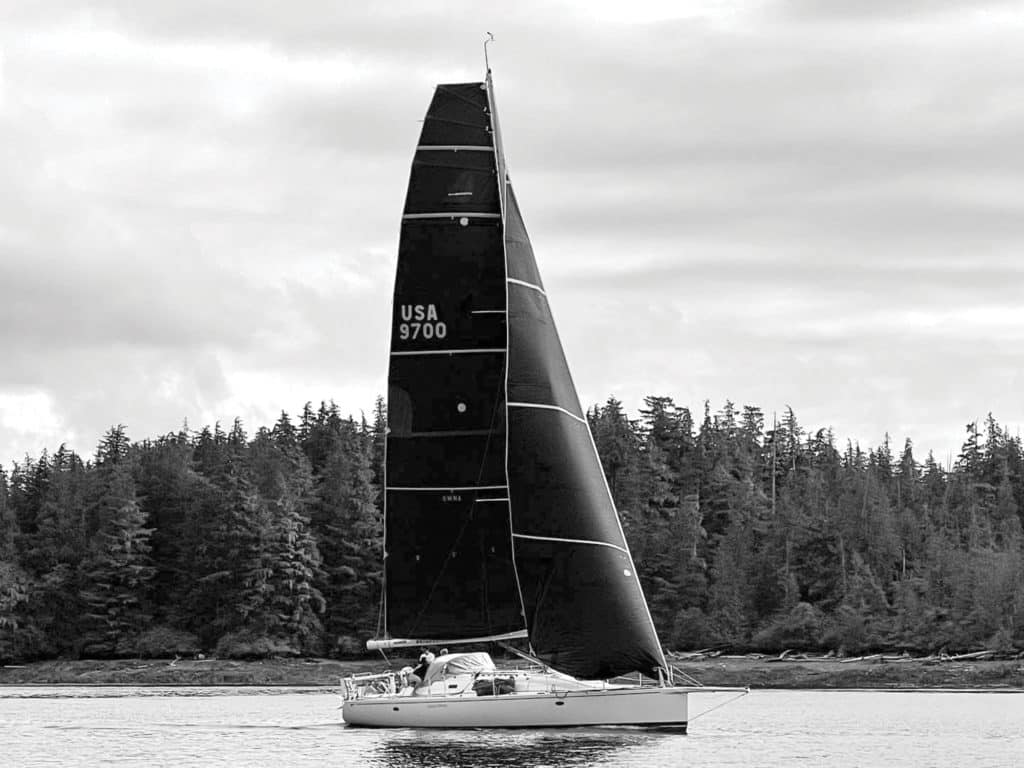
The breeze dies, but so does the swell. Suddenly, it is completely quiet. We are surrounded by small rocky islands and coves, with ancient fir, hemlock and spruce growing over the water’s edge. We hear the repeated blows of humpback whales spouting just to leeward. It is like a dream, a sort of maritime utopia.
Nobody says anything; we are in a trance. We are racing, but we are also doing something else right now. I don’t know what to call it, but it feels like we have been transported to an ethereal world of mist and kelp. Nobody says it, but we don’t really want to leave this nirvana; it feels magical and otherworldly.
Sunday, 8:43 p.m. Getting hairy again. After negotiating the Bella Bella checkpoint, we head back out to sea into the mighty Hecate Strait, the shallow but open stretch between the Queen Charlotte islands and British Columbia coast. It was nice downwind sailing all afternoon, but now the rain has arrived, and the southeast wind is rising. From a pleasant 12 knots, we now have 18 knots, a rising sea state and constant rain. Welcome to the gates of Alaska. With the forecast of increasing winds, all three of us know this could be a challenging night, but also our last one if we can get through it successfully.
Sunday, 11:21 p.m. Jibe time. Matt and Alyosha have been crushing it, surfing and planing in the 22 knots, confused sea and total darkness. But now it is time to jibe. I put on my foulies and harness, and climb on deck for the jibe. First, we move the stack of sails and other gear that we use to help our trim and stability (legal in this race with few rules).
That is a lot of exertion, so we take a couple of minutes to cool down before executing the jibe. We get through it. Not pretty but adequate. Now we are heading straight for the finish at Ketchikan, only 100 miles away. Matt goes down to rest, and Alyosha and I take short spells at the helm to try to stay fresh.
Monday, 6/20/22, 1:08 a.m. Bump in the night. Bam! The boat shudders, and the sound of splintering wood tells us we have hit a large log head-on. Matt is on deck in a flash. I rush below to check the bow and the bilges. All seem OK. We are not sinking. But it seems like a warning. Caution to all ye who ply these waters; you are mere humans, and there are larger forces at work out here .
With the wind continuing to climb and fatigue becoming a factor, we drop the kite and sail the main only for a while. The letterbox drop is not as clean as some we’ve done in the past. The kite gets around the leach of the main and catches on the lazy jacks going over the boom. Matt puts his hand right through the sail in his enthusiasm to get the spinnaker under control, and we can see the sail has ripped in several places. Finally, we get it into the companionway. We switch to one person on deck to preserve energy until dawn arrives or the wind lightens.
Monday, 4:56 p.m. The finish (but not the end). After a light and sloppy transit of Dixon Entrance, then a beautiful downwind run into Ketchikan (shirts off), we finish the R2AK after four days and four hours of intense sailing. Yes, we’ve won the race, which was incredible. But as the three of us reflect in the rare Alaska sunshine, we agree we’ve all been changed by the experience.
I’ve found a renewed love of the ocean and the land that bounds it, the creatures within it, and the winds and currents that stir it so relentlessly. We have trusted each other completely and worked together in the way only shipmates can. And each of us found something within ourselves, a sense of peace and gratitude that only the sea can provide.
- More: Offshore Racing , offshore sailing , Print Fall 2022 , Racing
- More Racing

INEOS Britannia’s Hot New AC75 Ready to Launch

Sailing’s Health Starts At Home

Luna Rossa’s New AC75 Marks Its Silver Age

Emirates Team New Zealand Splashes Defense Yacht

Wanderers of the Wayfarer Dinghy

Alinghi Red Bull Racing First to Reveal Its AC75

- Digital Edition
- Customer Service
- Privacy Policy
- Cruising World
- Sailing World
- Salt Water Sportsman
- Sport Fishing
- Wakeboarding
- Alaska Insight
- Watch KAKM Live
- Indie Alaska
- Ways to Watch
- There is Hope
- AK Passport
- In My Family
- KSKA Schedule
- Hometown, Alaska
- Listen to KSKA Live
- All Radio Programs
- Outdoor Explorer
- Addressing Alaskans
- State of Art
- Alaska Economic Report
- Hear me now
- Military Voices
- One Small Step
- Alaska Morning News
- Talk of Alaska
- Alaska News Nightly
- Traveling Music
- Black History in the Last Frontier
- Latest News
- Environment
- Mental Health
- Rural Health
- Alaska Legislature
- Washington, D.C.
- Public Safety
- ANCSA, 50th Anniversary
- Midnight Oil
- Daily Digest
- AKPM Community Education Engagement
- Race Matters
- Ready to Learn
- Library Explorers
- Molly of Denali
- Learning Media
- Parent Resources
- Watch PBS KIDS
- Workforce Development
- Ways to Give
- Benefits of Membership
- Together We Are Stronger
- AKPM Merchandise
- E-Newsletters
- Organization
- Public Documents
- Public Meetings
- Accessibility Commitment
- Donor Portal

The Race to Alaska is back, both in film and on the water
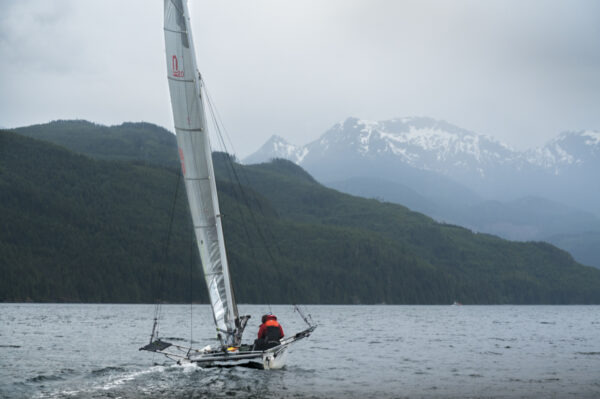
The Race to Alaska — a 750-mile, engineless, unsupported boat race from Port Townsend, Wash., to Ketchikan — is back after a two-year hiatus due to the coronavirus pandemic.
First place wins $10,000 cash, which is nailed to a piece of wood in Ketchikan, and, famously, second place gets a set of steak knives. All that the rest of the finishers get is a sense of accomplishment and some good stories to tell.
There’s a new documentary out called “ The Race to Alaska ” that stitches those stories together to take the viewer along for an epic journey, while explaining what the race is all about.
Zach Carver directed “Race to Alaska,” which is hilarious in some moments and deadly serious in others. Carver says that duality is true to the competitors and the race itself.
[Sign up for Alaska Public Media’s daily newsletter to get our top stories delivered to your inbox.]
The following transcript has been lightly edited for clarity.
Zach Carver : I mean, it’s an interesting thing, because if you took your time, the Inside Passage is very doable. People have done it in just a basic canoe. But the element of racing makes it much more challenging. And when you remove the motor from the equation, it gets pretty harrowing. There’s huge tidal currents in the area that can run in some places over like 15, 16 miles per hour. There’s places that look like a river, which switches direction, you know, depending on the tide. The cold water, hypothermia, remote areas, hitting rocks, going 24 hours a day. And then, like, if you’re a smaller boat, there’s bears on the shore if you have to camp and whatnot. So there’s a lot to deal with.
Casey Grove : Yeah, I’ll say. There’s a quote from one of the co-founders, who says that the winner is the least interesting thing about the race. What does he mean by that?
ZC : Just watching people get up this waterway is so fascinating. Like, there’s just incredible characters that take it on and a lot of really unique methods to doing it. So if you said, “Oh, I have to drive a mile.” Well, the person that drives a mile in a car — it’s pretty doable. But the person that decides to somersault a mile is much more interesting. And so I think when you see people on, like, a small, small craft, and there’s a stand-up paddle board that does it, there’s people that have made their homemade pedal drives doing it solo, it just starts to be more fascinating. Like, how do you approach this with different limitations?
CG : Yeah, totally. There’s, it seems like, a lot of humor, in the editing and stuff in the movie and striking that balance between the humor and the real serious aspects of this, where it is like a life or death situation out there, probably, sometimes, how did you strike that balance? Or how did you approach that?
ZC : I mean, I really think it’s authentic to the event and the people that take part in it to create that humor. So much of where we started with that was just the people themselves, the stuff that they self-documented, stuff they chose to point their own cameras at. There’s often a lot of humor involved. And I think that the organizers, too, have a very, like, real gallows humor about them in a really, I think, a positive way. And so we wanted to, I wanted to, imbue the film with all of the same good-natured humor of the people that participate. And I also think it’s related to that kind of adventure — where if you don’t have a good sense of humor, you can’t get through the difficulty.
CG : I take it that different competitors in the race had cameras with them. And how did you pull off, you know, shooting all this video to make this film with folks, it sounds like, over different years and with different people in different boats. How did that all work?
ZC : It was a lot. I mean, you have your teams spread out over 750 miles of racecourse. And there’s 40-plus teams every year. And there’s only two checkpoints. So there’s only two places you predictably know anyone’s going to be. And so we highly encourage people to film on whatever camera they had, you know, GoPros, cellphones, sometimes fancier cameras. We had a sponsor one year from a company called Intova that was like a GoPro competitor. So we gave everyone an Intova camera one year, which yielded a lot of fun things, because people didn’t expect to have that camera. So I think it made them performative, which was kind of cool. But yeah, in general, it’s the challenge of that, plus also finding opportunities to film context and get out there with drone shots, or aerials, or to document for other boats.
CG : So for the guy just walking in off the street who’s never really been into boating, for somebody that’s just never heard about this race, and sees the movie poster or whatever, what do you want them to know about it going into it?
ZC : I want them to know it’s gonna be a fun ride. It’s a funnier movie maybe than the poster suggests. I know I had a funny moment. We had our Los Angeles premiere last night. And some friends who hadn’t seen it said there was a really fun moment where in the beginning, they’re watching it going, “Oh my God, I could totally do this. I could be one of these people. I could do this race.” And then about five or 10 minutes later, they see the gravity and seriousness of it and they go, “Oh man, I have a lot to learn. I do not think I can do this race.” Hearing that they were swept up in it and that they — I don’t know, I feel like it’s a movie that you can get swept up in, and there’s just a lot to learn about this, this area, these people, this waterway. I don’t know, that’s not like one takeaway. But I do think that it’s a fun emotional ride that, going through this, this experience really changes everyone that does it. Every racer that’s done this thing finishes with a look on their face of change and accomplishment, and I hope that the film conveys that, that it’s immersive, and you can feel some of that transformational quality.
‘The Race to Alaska’ film is showing at the Bear Tooth Theatrepub on Monday night and the 2022 race kicks off June 13.

Casey Grove, Alaska Public Media - Anchorage
Casey Grove is host of Alaska News Nightly, a general assignment reporter and an editor at Alaska Public Media. Reach him at [email protected] . Read more about Casey here .
RELATED ARTICLES MORE FROM AUTHOR
Bills aimed at reducing energy costs, boosting cook inlet gas and carbon storage advance in legislature’s final days, suzanne lafrance poised to be anchorage’s first elected female mayor, anchorage mayoral runoff election: q&as with dave bronson and suzanne lafrance.
- Skip to primary navigation
- Skip to main content
- Skip to primary sidebar
- Skip to footer
Southeast | Sports
In conditions ‘between seasick and dangerous,’ Race to Alaska kicks off with multiple rescues
June 14, 2022 by Eric Stone, KRBD - Ketchikan
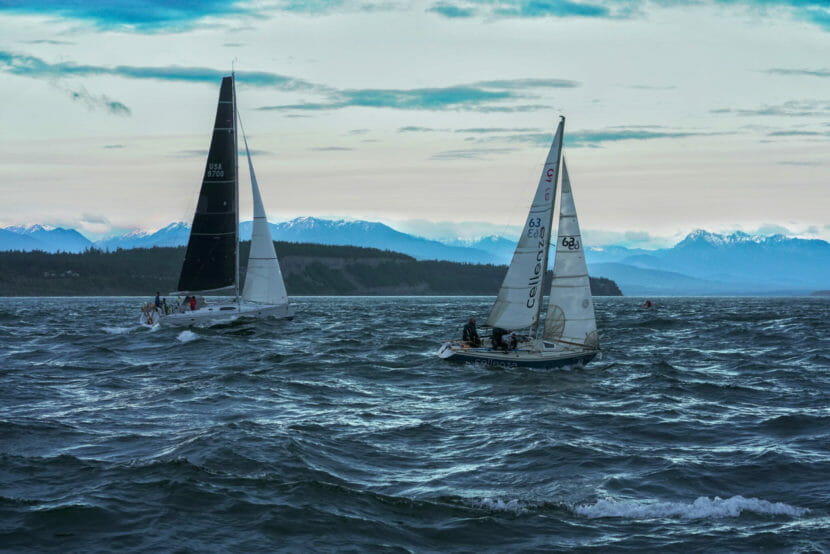
Rowboats, kayaks and racing sailboats cast off Monday from Port Townsend, Washington for the official start of the Race to Alaska . The unpowered boat race stretches 750 miles to Ketchikan.
It started at 5 a.m. Monday with a qualifying leg from Port Townsend to Victoria B.C. The 40-mile “proving ground” course is meant to make sure competitors are prepared to tackle a self-supported journey up the west coast of Canada.
Racers typically have 36 hours to complete the leg. This year, the deadline was extended by a day because of weather conditions near the start that organizers described as “ between seasick and dangerous .”
The first boat into Victoria Harbor was Pure and Wild . It’s a three-man crew on a Riptide 44-foot monohull sailboat featuring a member of the most recent Race to Alaska winning team and a two-time Olympic medalist.
Teams Pestou and Ruf Duck, both on multihull sailboats, followed behind Pure and Wild to round out the top three.
But not all fared so well. Organizers announced Monday morning that three smaller boats had capsized — two sailing dinghies and a sailing canoe — and a larger 32-foot catamaran lost its mast in the rough conditions.
#Update : (2/2) The vessels that capsized were sailing vessels and not kayaks. 4 people entered the water, 3 were rescued by #USCG crews, 1 was rescued by a standby safety boat. All remaining participants took shelter near Protection Island, Dungeness Spit, or returned to land. — USCGPacificNorthwest (@USCGPacificNW) June 13, 2022
According to King 5 in Seattle, the Coast Guard and race organizers rescued four participants who were taken to hospitals with signs of hypothermia .
Pure and Wild’s promising start on the proving ground doesn’t earn them any prize or advantage on the next leg, aside from bragging rights. Racers that make it through are scheduled to start their 710-mile journey to Ketchikan at noon Pacific Time on Thursday in Victoria.
From there, racers have just one waypoint they must reach, in Bella Bella, B.C., before crossing the finish line at Ketchikan’s Thomas Basin. Unlike previous years, teams are not required to sail through the Seymour Narrows on the east side of Vancouver Island — some pre-approved competitors will be allowed to sail west of the island on the open Pacific Ocean.
It’s the first Race to Alaska since 2019 . And while the course options are a little different, the prize remains the same: $10,000 for first place, and for second place, a set of steak knives.
KRBD - Ketchikan
KRBD is our partner station in Ketchikan. KTOO collaborates with partners across the state to cover important news and to share stories with our audiences.

Sign up for The Signal
Top Alaska stories delivered to your inbox every week
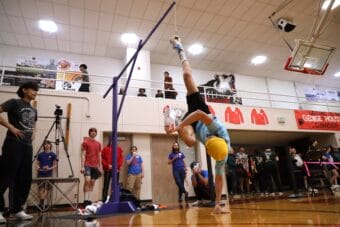
Stick pulls, seal hops and sportsmanship: Traditional Games bring 260 athletes to Juneau
April 9, 2024
This year, athletes broke 13 records in different categories.
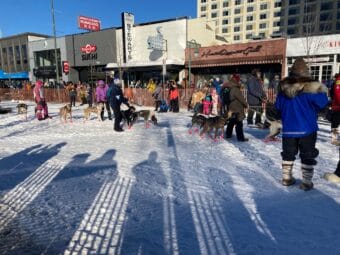
In fundraising pitch, Iditarod planners say financial woes could jeopardize epic sled dog race
April 3, 2024
Several major race sponsors have ended their support for the race in the last several years.
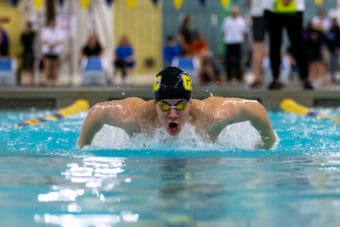
High school swimmer from Juneau qualifies for Olympic trials
April 1, 2024
Thunder Mountain High School’s PJ Foy will compete in the 100-meter butterfly in June.
Social media
Facebook Twitter YouTube Instagram
Public Media
- Gavel Alaska Media Use Policy
Share on Mastodon
The ‘best worst idea’: Race from Washington to Alaska for engineless boats returns
A Northwest adventure race that some call “the best worst idea” has returned after a long, pandemic hiatus. The 2022 running of the Race to Alaska for engineless boats cast off at the first light of dawn Monday amid high winds in the Strait of Juan de Fuca, conditions the organizers characterized as “between seasick and dangerous.”
The race stretches 750 miles from Port Townsend, Washington, to Ketchikan, Alaska. The first leg, dubbed “The Proving Ground,” covers the 40 miles to Victoria, British Columbia. The name was apt this year as the rough weather quickly caused three small boats to capsize and dismasted a fourth. All crew members were safely rescued.
The U.S. Coast Guard launched a helicopter from Air Station Port Angeles to hoist two men who were flung into the choppy water from their overturned 14-foot C-Lark sailboat. Two other solo skippers whose small trimarans capsized were pulled from the hypothermia-inducing seas by a Coast Guard boat crew in one case and in the other case by a civilian vessel.
At least a half dozen captains decided to delay their starts and stay in port until the winds and waves settled down. The race's High Command gave all competitors an extra 24 hours to cross the strait on the qualifying leg so that no one would feel pressure to row or sail in unsafe conditions. That created a 5 p.m. Wednesday deadline to reach Victoria’s Inner Harbor without assistance to qualify for the full race to the North.
On the eve of the start, Race to Alaska co-founder Jake Beattie said it had been a long wait for this day to come. It's been nearly three years since the maritime adventurers were last trying to puzzle out a safe passage to Alaska.
"The racer community and the fans of the race are almost vibrating about how excited they are to have this back on line and back ready to happen again,” Beattie said in an interview Sunday at a pre-race block party on the Port Townsend waterfront.
The closure of the U.S.-Canada border to nonessential crossings had to be eased for the race to return. Plus, the isolated small towns along the route north had to be welcoming of visitors.
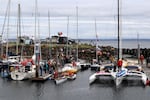
Race to Alaska entrants of many shapes and crew sizes were getting ready for the 750-mile engineless, unsupported boat race from Port Townsend to Ketchikan on June 12, 2022.
Tom Banse / NW News Network
"The last thing that we wanted to do was to be the event that took COVID from the Seattle area and put it into the remote communities of Canada,” said Beattie, who is the executive director of the Northwest Maritime Center.
Beattie and his co-conspirators at the nonprofit in Port Townsend purposely designed this race to have as few rules as possible – and this year in the sixth edition of the frigid, wilderness marathon one required waypoint has been thrown overboard.
“We decided that the thing that we could do to freshen the riddle of the Race to Alaska was to remove one of the rules – one of the few rules – which is that you have to go through Seymour Narrows,” Beattie said.
Seymour Narrows is a tidal channel rife with whirlpools on the Inside Passage, halfway up Vancouver Island. The alternative for vetted ocean racers is to go outside in the open, unforgiving North Pacific. One mandatory mid-race checkpoint remains at Bella Bella, British Columbia.
A standing rule is that any size boat with any size crew can enter the race, but the boat has to be engineless. That means only sail power or muscle power. In addition, the competitors must be self-supported. No chase boats with mechanics and fresh supplies allowed.
Beattie says one of his early, witty encapsulations of the race still holds: "It's like the Iditarod, but with a chance of drowning or being eaten by a bear or run over by a freighter."
It sounded doable to first-time Race to Alaska crewmember Steve Colman, who came all the way from New South Wales, Australia.
“That’s the attraction of adventure – uncertain outcomes,” Colman said while stowing supplies for the voyage Sunday. “If it was all pedestrian, then we wouldn’t want to be in it.”
Colman is voyaging with Aussie friend Bob Killip and captain Stuart Sugden on a used 20-foot recreational sailboat purchased online sight unseen in Vancouver.
"We've won the race if we get it to Alaska as far as we're concerned,” Killip said. “And see bears, see orcas and meet a few people, have fun and be safe.”
Thirty-six teams from as close by as Victoria and Friday Harbor, from Portland and landlocked Missoula, to as far away as France and Australia started the full race. They are mostly a mix of trimarans, catamarans and sailing yachts (aka monohulls), along with two kayaks and a half dozen expedition rowboats. No standup paddleboarders are competing this year, for a change. Nine people are attempting the race solo.
The solo racers include Doug Shoup of Sedro Woolley, Washington, who is making his third try to reach Ketchikan, this time with a brand new, 19-foot wooden boat he built himself over this past winter. He's competing under the name Team Perseverance .
"It's taken a lot to get here. And I'm going to get there,” Shoup vowed as he made last minute adjustments Sunday to his modified Angus RowCruiser model boat. “I put a lot into it when you consider I built two boats, not one. A lot of training. I've lost a ton of weight."
Now on the silver screen as well as on the water
For landlubbers unwilling to brave the elements and exhaustion, there is another way to experience the Race to Alaska and meet its alumni. Filmmaker Zach Carver directed a 98-minute eponymous documentary about the race. It's now showing in select theaters and coming to streaming later.
Carver chose a pithy description attributed to Race Boss Daniel Evans to serve as the movie’s promotional tagline. “The best worst idea,” fits because of the amazing human potential on display, Carver said.
"The through line is a flair for the absurd to some degree,” Carver said in a waterside interview. “It is an absurd competition that is also calling on something very deep and beautiful within us. It's that balance."
When the starting gun fired Monday, Carver joined a worldwide subculture known as "tracker junkies." These folks will be following the Ketchikan-bound racers , now reduced to dots on an online map corresponding to their GPS beacon signals. You can overlay the real-time weather, the vessel speed and then let your imagination loose for what the teams might be facing on their way to southeast Alaska.
As in year's past, the winning boat gets $10,000. Second place earns a set of steak knives.
Quick separation expected this year
Carver and Beattie said they expect this year's race to divide fairly quickly into two groups. A group of experienced ocean racers at the front will sail hard day and night on vessels purpose-built to go fast. Those in this group who manage to avoid catastrophic collisions with unseen driftwood logs should finish in Ketchikan early next week. The majority of teams who are in it for the personal challenge and possibly a life-changing experience will string out far behind and generally take two to three weeks to reach the finish line.
Team Pure and Wild, a 44-foot racing monohull, captured bragging rights by winning the first stage to Victoria this year. The Seattle-based team is captained by two-time Olympic (sailing) medalist Jonathan McKee and his crew includes the skipper of 2019 Race to Alaska-winning Team Angry Beaver.
After a roughly two-day break to make any repairs or adjustments, the race restarts in earnest on Thursday at high noon for Stage 2, the remaining 710-mile trek from Victoria to Alaska.
A team named Mad Dog Racing set the course record in 2016 with three days and 20 hours of nonstop sailing on the second stage. The three-member team completed their speedy trip with barely any sleep on a 32-foot, high-performance catamaran that had no cabin.
In 2019, only 25 of the 35 teams that started the full race made it all the way to Ketchikan.
OPB’s First Look newsletter
Streaming Now
BBC The Climate Question

- $ 0.00 0 items
Team Supernautiloid – Race to Alaska 2023

Veterans, musicians, veteran musicians, and musician veterans participating in a truly unique adventure.

Support the adventure…
S/V Gita is an older sloop, and is in need of quite a bit of work in order to prepare her for a safe and successful passage to Alaska. Your contribution in support of the refit and preparation of Gita is greatly appreciated. Team Supernautiloid thanks you.

Copyright © 2023 J Everman. All rights reserved.

Published on May 9th, 2024 | by Editor
Race to Alaska Podcast
Published on May 9th, 2024 by Editor -->
The Race to Alaska will hold its 8th edition in 2024 , continuing with its 750-mile course from Port Townsend, WA to Ketchikan, AK. And now there is a podcast series prior to the June 9 start. In this episode, three teams are quizzed on prop choice, sleeping in coffins, and things that could derail the whole endeavor:
Team Boogie Barge After eight years of R2AK-genuity, a lot of crazy and/or bad ideas have been attempted to get to Ketchikan. And here’s yet another one: build two wooden torpedoes and slap some bikes on it. No sails, no sleep.
Team Make Fetch Happen Christian Nally has been spying on R2AK since the start, and after all that time with his wheel spinning, his plan is to sail/row a 16-foot-long, 4-foot-wide Fireball dinghy. Perhaps he knows something we don’t.
Team Knot So Fast Whoever said lake sailors from Idaho can’t R2AK? This team has been rocking out in their Hobie 33 on the high desert lakes, and if the trailer makes it over the mountains, it will have its first taste of salt.

Race details: https://r2ak.com/
The 8th edition of the Race to Alaska (R2AK) returns again in 2024 for the 750 mile course from Port Townsend, WA to Ketchikan, AK.
Stage 1: The Proving Ground – June 9 start Port Townsend, WA to Victoria, BC (40 miles)
R2AK starts with an initial jaunt across open water, two sets of shipping lanes, and an international border. While not a race in itself, the Proving Ground is designed as a qualifier for the full race and as a stand-alone 40 mile sprint for people who just want to put their toe in.
Stage 2: To the Bitter End – June 12 start Victoria, BC to Ketchikan, AK (710 miles)
Racers start in Victoria at high noon and continue until they reach Ketchikan—or are tapped out by the sweep boat. Unlike the 2022 and 2023 races, the western side of Vancouver Island is no longer an option as the course has returned to the original format with two waypoints at Seymour Narrows and Bella Bella.
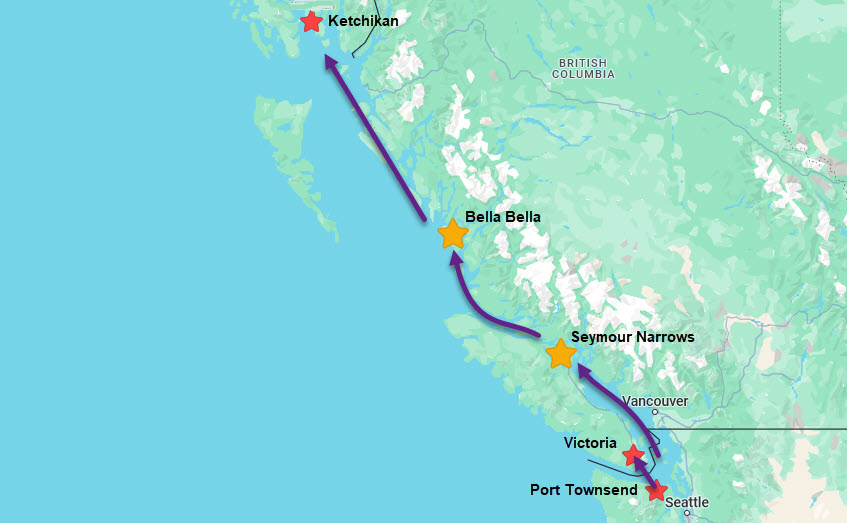
Tags: podcast , Race to Alaska , Race to Alaska Podcast
Related Posts

Conversations with Classic Boats →
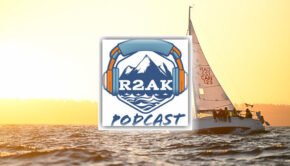

Race to Alaska Podcast →
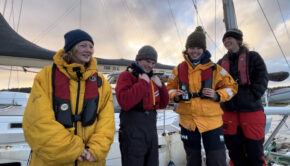
Skipping school for Race to Alaska →
© 2024 Scuttlebutt Sailing News. Inbox Communications, Inc. All Rights Reserved. made by VSSL Agency .
- Privacy Statement
- Advertise With Us
Get Your Sailing News Fix!
Your download by email.
- Your Name...
- Your Email... *
- Comments This field is for validation purposes and should be left unchanged.


Orcas Island teens to compete in Race to Alaska
W hile most high school students will be preparing for their final exams and wrapping up their school year this June, Orcas Island teens Dagney Kruger and Elsa Ranker will be sailing in the Race to Alaska (R2AK) competition. Joined by Bryce Lutz (19) and Willow Gray (18) from Bellingham, the team of four will compete in the first leg of the race on June 9, sailing 40 miles from Port Townsend to Victoria B.C., crossing two sets of shipping lanes and an international border. From there, the team will aim to complete the 710-mile journey from Victoria to Ketchikan, Alaska, starting June 12. The team, which is officially named the “Juvenile Delinquents” in reference to their plans to skip their final weeks of school, are excited for the multi-day journey and to go above and beyond high school dinghy racing.
For Kruger, much of her life has been spent on the sea. She began living on a boat with her parents at just five months old, sailing up to Alaska and spending her second birthday in Ketchikan before sailing back down. Her father Karl Kruger began a chartering business, Kruger Expeditions, taking guests around the San Juan Islands and up to Canada and Alaska, and Dagny would spend her summers sailing thousands of miles with her father. She joined the Orcas High School sailing club as a freshman, and now as a junior, she has been the team captain for the past two years.
Participating in the R2AK has been on Kruger’s radar since 2017 when her father completed the race as the first contestant on a paddleboard, finishing in just two weeks. She met up with her father in Ketchikan and met many of the competitors that year as well as the race master, increasing her already-growing interest in racing.
“[The race] was sort of on the back of my mind since then, but more of like this vague concept of something I could do eventually,” said Kruger. “A few years ago, there was a youth team from Seattle that did it, and I was like, ‘Hey, that could be me, I’m in high school. They’re in high school and they did this race, and that’s pretty darn cool.’ So we started trying to pull together a team of my own.”
Kruger initially looked to one of her close friends in the sailing club but was met with hesitation from their parents. While at a high school regatta in Bellingham, Kruger met Lutz and they began talking about the R2AK and Lutz was as eager as Kruger to make it happen. Lutz brought on board Gray, one of his friends from Bellingham High School where he graduated last spring, and Kruger approached Ranker, who is also in the Orcas High School sailing club, to round out the group.
Ranker, a freshman at Spring Street International School on San Juan Island, expressed her family’s initial fears yet overall support of her competing in the race during a team interview with the R2AK race boss on their podcast, Race to Alaska.
“When I was offered to be on this team, I asked [my parents] and my mom was like, ‘Yeah, I’m terrified, but this is going to be one of the best experiences of your life so far, so I’m not stopping you from doing this,’” said Ranker.
The first R2AK took place in June 2015, and was born in “the spirit of tradition, exploration, and self-reliance,” the passage having been paddled by native canoes since time immemorial and by sailing craft for centuries. It is the longest human and wind-powered race in North America and currently rewards the largest cash prize of $10,000. Although any boat without an engine is allowed to enter, the race is not for everyone, as the R2AK website warns of the “chance of drowning, being run down by a freighter, or eaten by a grizzly bear… There are squalls, killer whales, [and] tidal currents that run upwards of 20 miles an hour.”
In order to compete, applicants have to pass a vetting team, which examines the resumes of all participants, as well as learn about the team’s vessel. Kruger mentioned that despite her and her teammates’ young age, the vetting process went rather smoothly, as each team member has extensive experience in sailing.
The race is self-supported, meaning pre-arranged food and supply drops are prohibited while on the water, but racers are allowed to make stops on land if they so choose. The R2AK sweep boat – the grim sweeper – will set out on June 21 and travel 75 miles a day from Port Townsend to “tap out” any racers still heading north. Kruger’s personal hope is to complete the race in five days if weather permits but estimates it could take up to a week or longer.
The Juvenile Delinquents began training for the race in late August, and later purchased their boat, Loose Cannon, in Astoria, Oregon. Lutz explained in the podcast interview that he found the boat on Craigslist for $3000 after searching the site for an affordable vessel within the team’s budget. Kruger described the boat, a Carrera 19, as very shallow, low to the water, sled-shaped, and on the delicate side. Since then, the team has continued to outfit the boat, having recently put in bunks and a working pedal drive. As for training, they are currently focusing on crossing shipping lanes and sailing past dark, having recently completed their first overnight trip.
“Any weekends we all collectively have off, of course, we’re [on Orcas] doing training. And beyond that – we’ve sailed on boats other than our boat. Basically, any weekend that people have free, even if it’s not all of us, even if it’s just two of us, we’re out working on it together,” said Kruger.
Despite the potential dangers and harsh conditions of the journey, Kruger believes the team’s biggest challenge will be overcoming the monotony of life at sea: waking up, keeping watch, eating freeze-dried food, going to sleep, and repeating the cycle for several days in a small, enclosed space with the same people.
“There’s definitely a mental block to get over. I think the first two days are usually the hardest, so once we fall into a rhythm, it will definitely be easier,” said Kruger.
As captain of the crew, Kruger has focused on strengthening the group’s dynamic and building relationships with one another before putting their friendship to the ultimate test during those days at sea. One of the ways Kruger does this is by making sure everyone still has the opportunity to express their opinions, such as which route to take or who should take the first break, while still deferring to the captain in an emergency situation.
There will certainly be upsides to the expedition as well. Kruger is most looking forward to the beauty that awaits the group as they travel through the passages to Ketchikan, mentioning the gorgeous sunrises, towering cliffs and serene wildlife that will provide a break in the monotony and make their struggles worthwhile.
While they still have more money to raise, the team is extremely grateful to the many sponsors and supporters who have assisted them in fulfilling their dream to compete. As of late April, they have received over $14,000 in donations through the team’s GoFundMe fundraiser, and have received sponsorship from organizations like Waypoint Outdoor, who provided each member of the team with Helley Hansen dry suits and other critical gear to protect them from frigid waters and weather, and Supply Fisheries, who completely covered the R2AK application fee and is providing a large discount for the team to stock up on supplies, as well as Bacon Sails, who is providing generously discounted sails from their loft for the team’s boat.
Going forward, Kruger hopes R2AK is just the beginning of a long sailing career, and she expressed her interest to the Journal about participating in the Pacific Cup – a 2,000-mile yacht race from San Francisco to Oahu, Hawaii – with her father next summer. With her final year of high school around the corner, Kruger is considering a career in maritime transport and captaining cargo vessels.
For those interested in supporting the Juvenile Delinquents’ R2AK expedition, you can donate to their GoFundMe at https://www.gofundme.com/f/R2AK-Juvenile-Delinquents , and stay updated on their progress by following r2ak_juvenile_delinquents on Instagram.

- Log in/Log out (Opens in new window)
- All content
- Rural Alaska
- Crime & Courts
- Alaska Legislature
- ADN Politics Podcast
- National Opinions
- Letters to the Editor
- Nation/World
- Film and TV
- Outdoors/Adventure
- High School Sports
- UAA Athletics
- National Sports
- Food and Drink
- Visual Stories
- Alaska Journal of Commerce (Opens in new window)
- The Arctic Sounder
- The Bristol Bay Times
- Legal Notices (Opens in new window)
- Peak 2 Peak Events (Opens in new window)
- Educator of the Year (Opens in new window)
- Celebrating Nurses (Opens in new window)
- Top 40 Under 40 (Opens in new window)
- Alaska Spelling Bee (Opens in new window)
- Alaska Craft Brew Festival
- Best of Alaska
- Spring Career Fair (Opens in new window)
- Achievement in Business
- Youth Summit Awards
- Lynyrd Skynyrd Ticket Giveaway
- Teacher of the Month
- 2024 Alaska Summer Camps Guide (Opens in new window)
- 2024 Graduation (Opens in new window)
- Alaska Visitors Guide 2024 (Opens in new window)
- 2023 Best of Alaska (Opens in new window)
- Alaska Health Care (Opens in new window)
- Merry Merchant Munch (Opens in new window)
- On the Move AK (Opens in new window)
- Senior Living in Alaska (Opens in new window)
- Youth Summit Awards (Opens in new window)
- Alaska Visitors Guide
- ADN Store (Opens in new window)
- Classifieds (Opens in new window)
- Jobs (Opens in new window)
- Place an Ad (Opens in new window)
- Customer Service
- Sponsored Content
LaFrance leads Bronson in Anchorage mayoral runoff
Anchorage mayoral candidate Suzanne LaFrance with campaign supporters after initial returns were posted on Tuesday evening. (Anne Raup / ADN)
Anchorage mayoral candidate Suzanne LaFrance had a strong lead over incumbent Dave Bronson in preliminary runoff election results posted Tuesday night.
LaFrance received 55% of the vote and had a 10-point lead over Mayor Bronson, who had 45%.
After the initial results were released, LaFrance said in an interview she was feeling “excited, optimistic, filled with gratitude to everyone for getting us to this point.”
LaFrance chaired the Assembly during the first two years of Bronson’s term. Since Bronson took office in 2021, he and the Assembly’s supermajority have frequently clashed over numerous city issues.
“We know we’ve got some big challenges ahead,” LaFrance said in a speech to supporters gathered in downtown Anchorage. “We know it’s gonna take a lot of work to turn things around. But we can do it and we’ll do it together and I believe in us.“
After thanking her campaign team, voters and her family, LaFrance also thanked the Assembly members in the crowd, including members Daniel Volland, Anna Brawley, Kameron Perez-Verdia, Zac Johnson, Chair Christopher Constant and Vice Chair Meg Zaletel.
“Local government isn’t about left versus right. It’s about working together to get things done. And tonight I’m hopeful we’re turning a corner on how we’re going to work together,” she said.
At his campaign’s election night gathering Tuesday evening, Bronson emphasized that the count is not yet final.
“We are not discouraged by this,” Bronson said. “Would we have loved to have been 10 points ahead? Of course.”
Mayor Dave Bronson and his wife Debra look at initial runoff election returns on Tuesday evening, May 14, 2024. (Bill Roth / ADN)
“We’re not going to commit to anything tonight,” Bronson said.
On Tuesday evening, Bronson suggested that he was in a similar place on runoff election night in the 2021 election, and a comparable dynamic could allow him to pull ahead as additional ballots are counted in this year’s runoff election, as well.
“This is about where we were when we won three years ago,” Bronson said.
In the 2021 mayoral runoff, however, there was a much narrower gap between Bronson and his opponent: Then-Assembly member Forrest Dunbar had 50.08% of the vote on election night, and the two were separated by just 114 votes.
LaFrance on Tuesday was leading Bronson by 4,973 votes — a gap that will be difficult for outstanding ballots to close.
More than a hundred people were packed into the Bronson campaign headquarters Tuesday evening. Several prominent figures from state government and Republican party politics were in attendance, including Republican U.S. House candidate Nick Begich, former talk-radio host and Dunleavy staffer Dave Stieren, former talk radio host and Alaska Department of Fish and Game special assistant Rick Green, newly elected Alaska state GOP Chair Carmela Warfield, Bronson adviser Larry Baker, Assembly member Randy Sulte and former state senator and current Bronson legislative liaison Mia Costello.
Much of Bronson’s campaign messaging has emphasized criticism of the Assembly and keeping “balance” in city governance. The incumbent, a self-described conservative, has asserted that a LaFrance mayorship would amount to “single-party rule,” and that the former chair would work in lockstep with an “ultra-woke” Assembly.
For her part, LaFrance has criticized Bronson for controversies and challenges within his administration and for what she has asserted was a failure by the incumbent to tackle the city’s most pressing issues. LaFrance has said she will “restore competency” to City Hall and bring a “nonpartisan, collaborative, low-ego, problem-solving approach” to the mayor’s office.
In an interview after results were posted, Bronson reiterated his message about being a political counterbalance to the Assembly.
“At the end of the day, and I’ll be blunt with you, Chris Constant’s going to be pretty much running the city,” Bronson said. “That’s the way it works because he runs the Assembly, he runs the elections…If (LaFrance) were to pull this out, then that’s what we would be looking for. I’m that break on that. I’m the person standing in the gap and keeping that from happening.”
If LaFrance wins, she would be the first woman elected as Anchorage’s mayor.
But she would not be the first woman to hold the office: After the resignation of former Mayor Ethan Berkowitz in 2020, former West Anchorage Assembly member Austin Quinn-Davidson was selected by the Assembly to serve as interim mayor for several months.
At Tuesday night’s election gathering, campaign manager Katie Scovic hinted at how gender dynamics played into LaFrance’s campaign.
“Candidates typically receive a lot of feedback on what to say. As many of you in this room know, more often what not to say,” Scovic said. “But I’ve never seen someone who received so much feedback on how to say things, what to wear, what volume to speak at, how much to smile, how to smile. The list goes on, in moments when the feedback would have caused the rest of us to implode. Or at least I know I would have. Suzanne stayed steady.”
Anchorage mayoral candidate Suzanne LaFrance gathers with supporters at the corner of Benson Boulevard and the Seward Highway on May 13, 2024. (Marc Lester / ADN)
Anchorage Mayor Dave Bronson campaigned with supporters at the corner of Northern Lights Boulevard and Minnesota Drive on Monday, May 13, 2024. (Bill Roth / ADN)
Election officials have so far counted 51,019 ballots. Thousands more ballots have not yet been tallied, and percentages are likely to shift in the coming days as election officials count more.
It’s not yet clear exactly how many ballots remain to be counted. Tuesday night’s results included tallies for almost all ballots returned to the election center as of Monday morning, according to Acting Election Administrator William Northrop.
By 5 p.m. Tuesday, election workers had received and sorted a total of 62,956 ballot packages. A few thousand more returned by voters on Monday were in a locked cage awaiting sorting. Election staff have not yet processed ballots cast by voters on Tuesday, and more will arrive at the election center by mail over the next several days.
Election results will not be official until certification by the Anchorage Assembly, which is scheduled for May 31.
Emily Goodykoontz
Emily Goodykoontz is a reporter covering Anchorage local government and general assignments. She previously covered breaking news at The Oregonian in Portland before joining ADN in 2020. Contact her at [email protected].
Zachariah Hughes
Zachariah Hughes covers Anchorage government, the military, dog mushing, subsistence issues and general assignments for the Anchorage Daily News. He also helps produce the ADN's weekly politics podcast. Prior to joining the ADN, he worked in Alaska’s public radio network, and got his start in journalism at KNOM in Nome.
- Other Sports
- Puget Sound
‘Everyday people’ set sail from Seattle for around-the-world race
Winds died to 2 to 3 mph from the south-southwest and Elliott Bay was glass calm. Not ideal for sailing, but not a storm either.
Those were the conditions at Seattle’s Bell Harbor Marina as 11 sailing teams from around the world set off Friday in 70-foot ocean racing yachts for the seventh leg of the Clipper Round the World Yacht Race.
The teams, each with 20 to 24 people, will traverse 7,200 miles, from Seattle to Panama and on to Washington, D.C.
Organizers say the event trains “everyday people to become ocean racers.”
Each participant must complete four weeks of intense training before taking part in one or all eight stages of the circumnavigation. As for the crew, 30% of them, who hail from 55 nations, have never been on a sailboat before readying for this race.
So far, the teams have raced over 20,000 nautical miles. The event started in Portsmouth, England, on Sept 3. After the race reaches D.C., it’s on to Scotland then back to Portsmouth on July 27, some 11 months after they departed. The full around-the-world challenge is 40,000 nautical miles.
Della Parsons, crew recruitment director for Clipper Ventures, did a presentation Wednesday in Seattle meant to inspire people to give the adventure a try. As she showed video from a previous race that included huge waves and difficult conditions, she said “You could see people’s eyes widening and thinking, ‘This is ridiculous. I could never do that.’ And then I said to them at the end of the video, ‘I know you’re thinking that but you have to remember all of the people that you’ve just seen on this video are just like you. Two years before that they were also sitting in a presentation thinking ‘this is ridiculous.’ And now look at them. They’ve just really achieved something remarkable.”
For more information check out the website .
Most Read Local Stories
- Light rail station stabbing of Seattle chef followed fight, police say
- Bob's Your Uncle: 2 Bob Fergusons withdraw from WA governor's race
- King County recorder misdirected millions in funds, audit finds
- WA road deaths jump 10%, reaching 33-year high. What are we doing wrong?
- Northbound I-405 in Renton reopens after hit-and-run crash, truck fire
The opinions expressed in reader comments are those of the author only and do not reflect the opinions of The Seattle Times.
2022 Daily Updates
STAGE TWO TRACKER REPLAY | STAGE ONE TRACKER REPLAY | RESULTS | FIELD REPORTS | TEAMS CHEAT SHEET | CHELCIE PAPERS
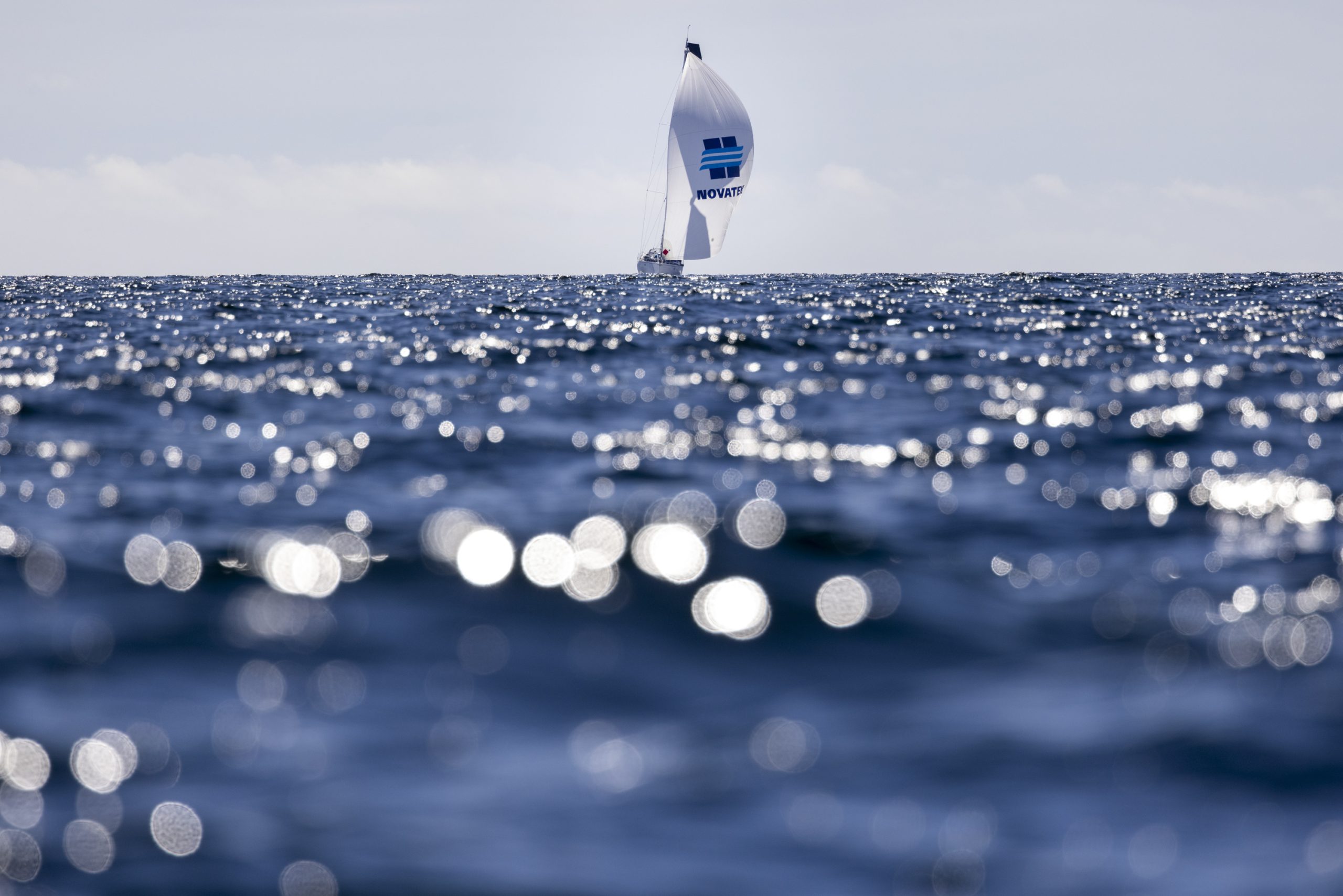
Day Done: A Letter from the Race Boss
Field Report photo: Team Pure and Wild by Thomas Hawthorne First things first: without the huge support from our Presenting Sponsor—Fisheries Supply—and Mustang Survival, First Fed, The Ketch, Marine Exchange of Puget Sound, Ketchikan Visitor Bureau, Baranof Fishing Excursion, Outpost Ag, British Columbia Ministry of Tourism, MapTiler, and Victoria Harbor Authority this race would be…
Continue Reading Day Done: A Letter from the Race Boss
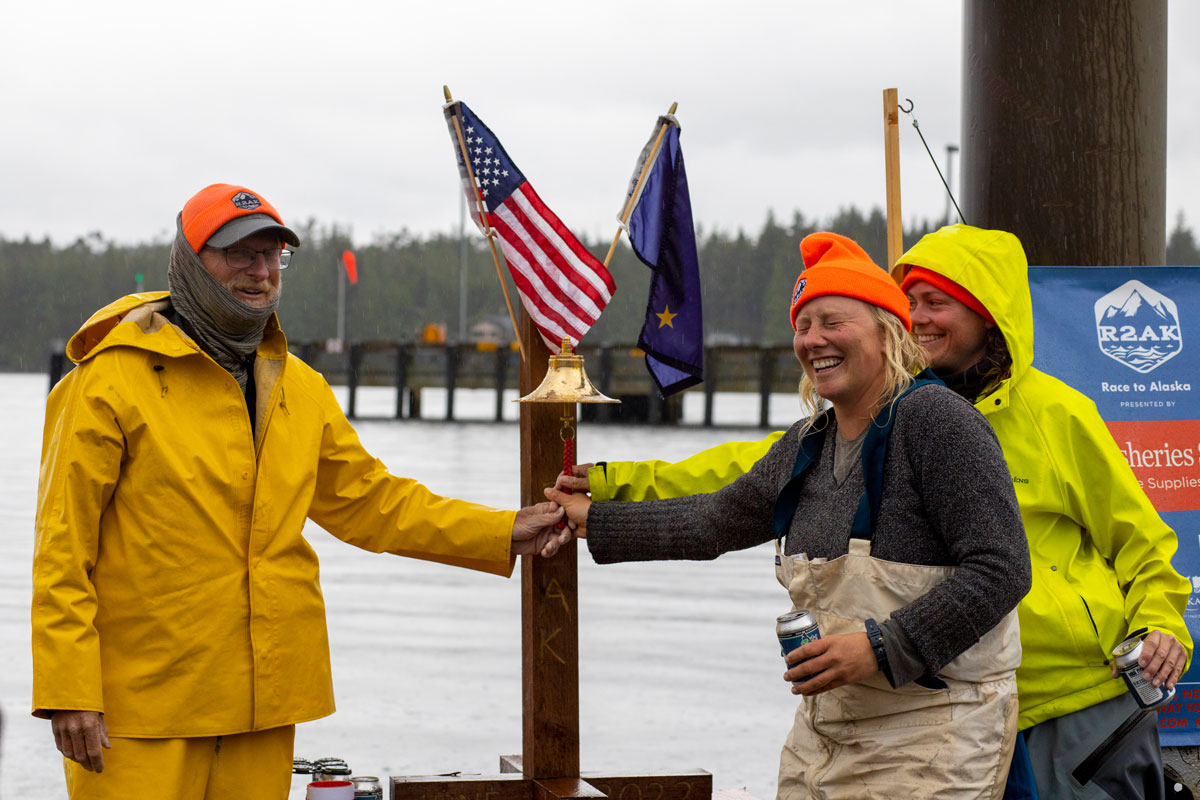
Day 22: Frankenstein for everyone. Speed recalculated.
photo: Team Sockeye Voyages by Lynnette Oostmeyer The last of the “Small Boat Nation” came in yesterday, roughly two hours apart, and ended the same way they began, racing against blips and trading leads until the final moment. After 21 days of tacks, hundreds of miles of rowing, boat repairs, countless meals, and campsites, Fix…
Continue Reading Day 22: Frankenstein for everyone. Speed recalculated.
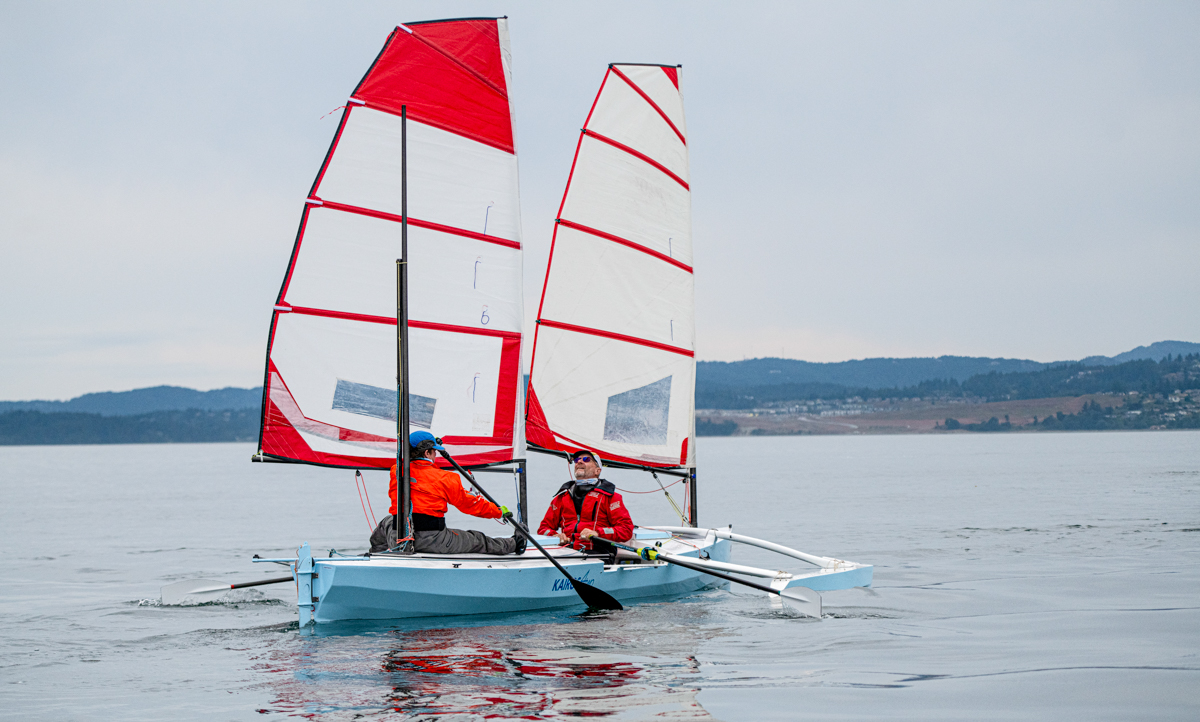
Day 21: Numerology, the risk of specificity, and turbo-charged leisure
Field Report photo: Team Fix Oder Nix by Jim Meyers We bounced around the idea and can now avow, “We have never seen a match race for the final finisher like we are tracking at this moment.” Both Sockeye Voyages and Fix Oder Nix found the nitrous button by the bilge pump handle and are…
Continue Reading Day 21: Numerology, the risk of specificity, and turbo-charged leisure
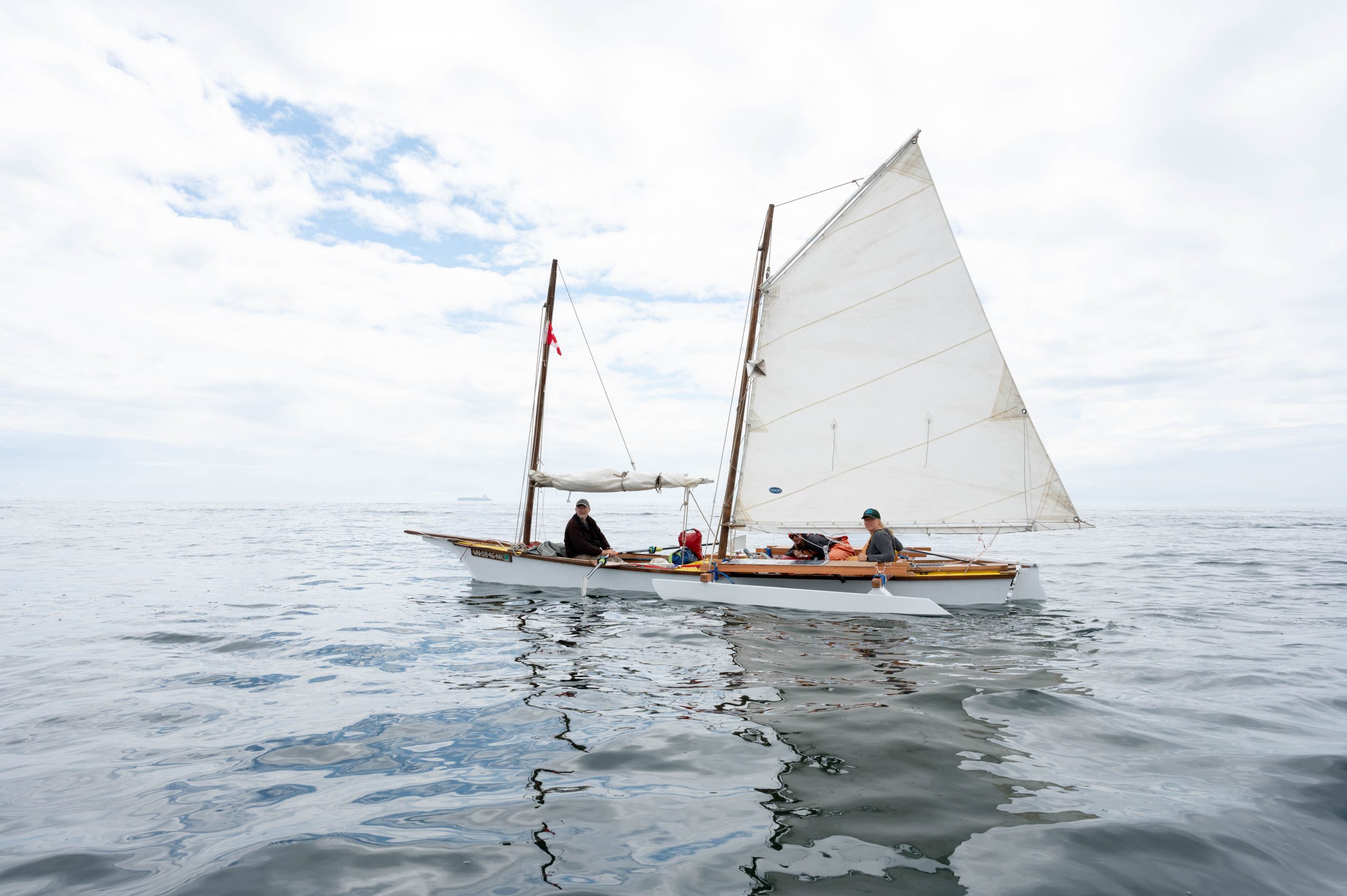
Day 20: Playing through Loss Aversion
Field Report photo: Team Sockeye Voyages by Rebecca Ross Fix Oder Nix and Sockeye Voyages. Two teams who know this race differently than any others. At 20 days they are the only ones left on the field, with the Grim Sweeper at Rennison Island by noon today. The best communication only gives up snippets, like…
Continue Reading Day 20: Playing through Loss Aversion

Day 19: Shining Statues on Math Day
Field Report | 24-Hour Fact Sheet photo: Team Oaracle by Lynnette Oostmeyer No Daily Update yesterday due to obvious reasons. Because of our shoddy work ethic, you may have missed the legends coming into Ketchikan. Janice and Ian of Team Oaracle (pausing a moment for genuflection) crossed the finish line on July 3rd to claim…
Continue Reading Day 19: Shining Statues on Math Day
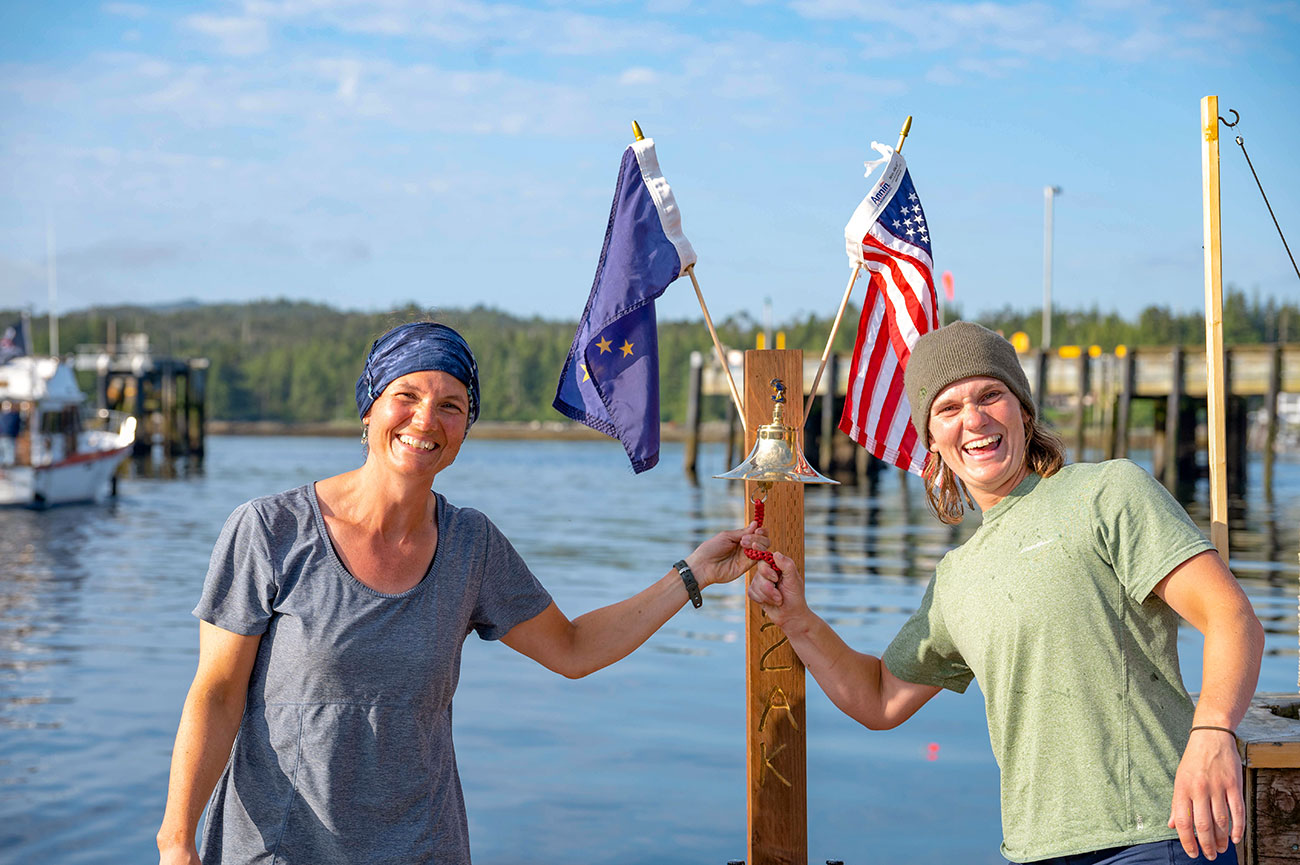
Day 17: Oars finally stop. Snow in Ketchikan.
Field Report photo: Team Don’t Tell Mom by Rebecca Ross It may not be true, but yesterday was the hottest it has ever been in Ketchikan. At 7:03 AM AKDT, when Team Don’t Tell Mom pulled their final boat length of water to become the first human-powered finishers in 2022 and the first all-women rowing…
Continue Reading Day 17: Oars finally stop. Snow in Ketchikan.
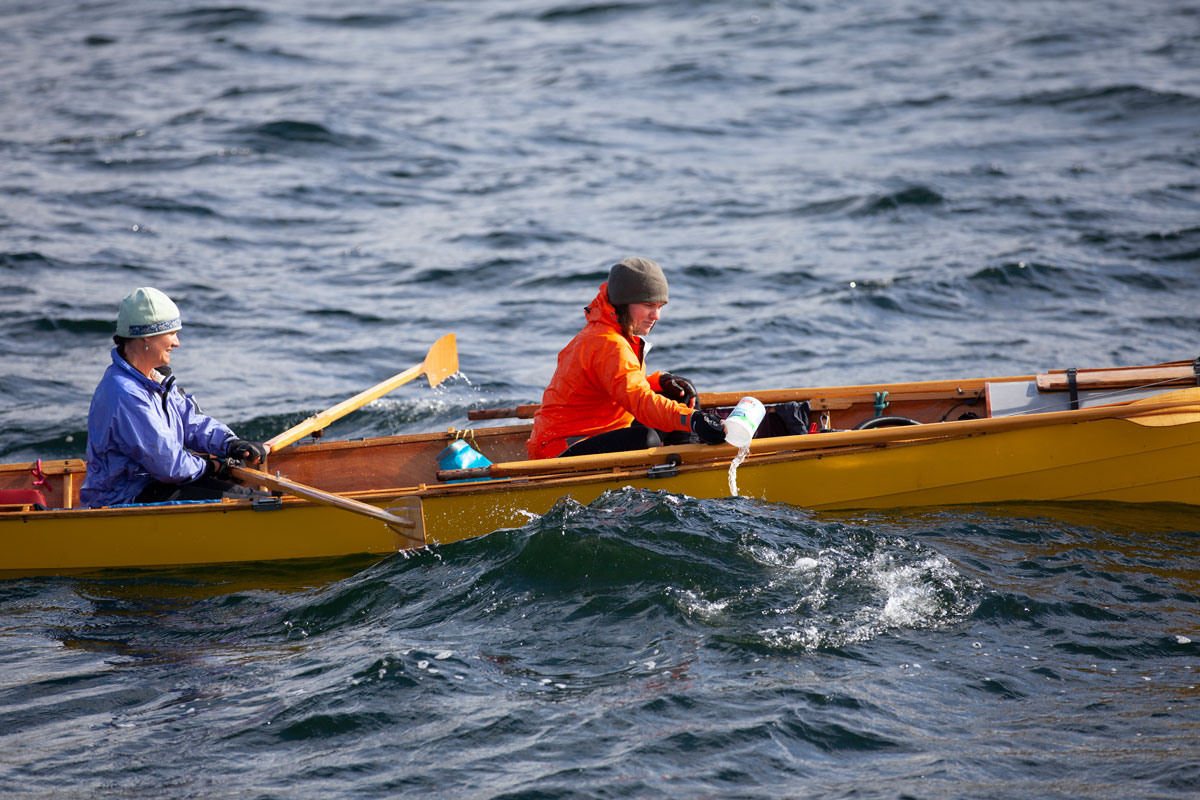
Day 16: Human horsepower and the art of wrong
Field Report photo: Team Don’t Tell Mom by Lynnette Oostmeyer CORRECTIONS: Before we get to the business of the day, let’s recenter. Calling the R2AK out on being factually inaccurate is worldwide the most predictable kind of “Duh.” Saying we got a fact wrong is like blaming gravity for going downhill, like calling out a…
Continue Reading Day 16: Human horsepower and the art of wrong
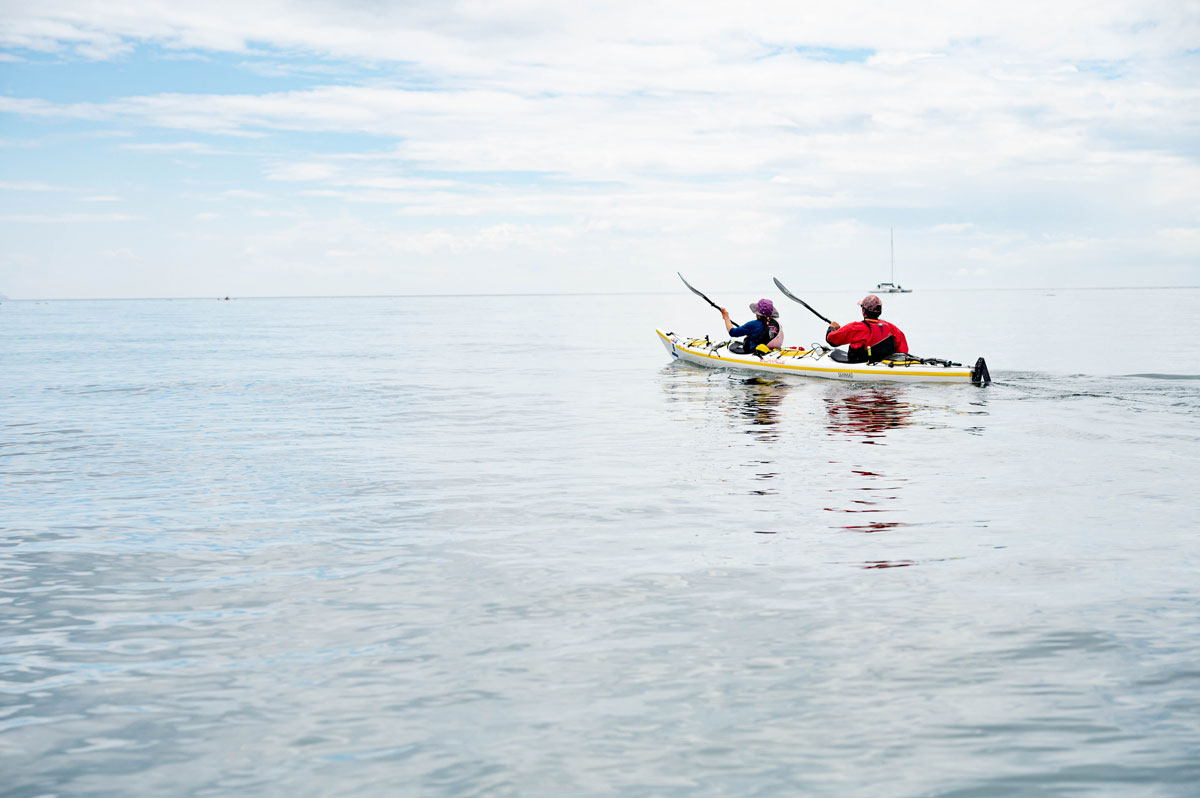
Day 15: The Bella Bella off-ramp, mindfulness, and a guess we got right
24-Hour Fact Sheet photo: Team Oaracle by Rebecca Ross Today, without a single finish in Ketchikan, we are down to six teams. James of Team Bangarang pulled into Bella Bella, unclenched his hands from his oars, turned his head from the water to the sky, and counted the days. Life has its fair share of…
Continue Reading Day 15: The Bella Bella off-ramp, mindfulness, and a guess we got right
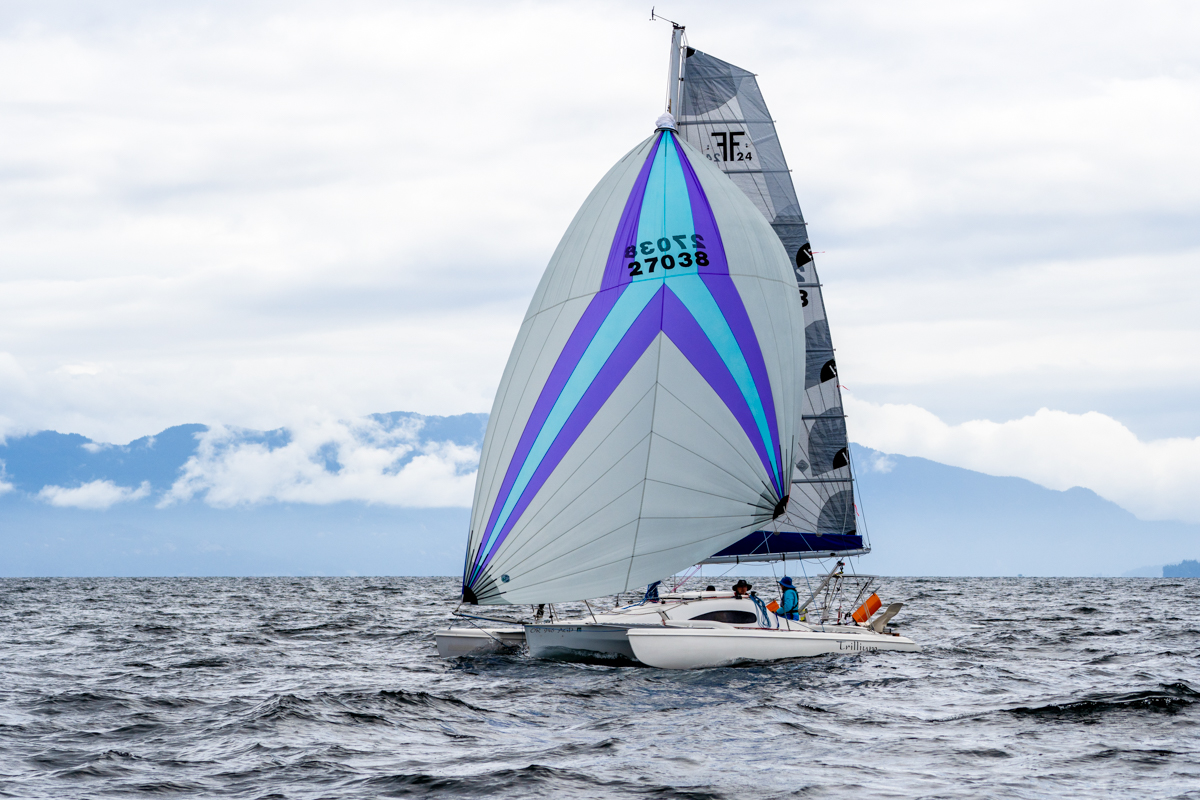
Day 14: Falling titans, toes for math, and the Grim Sweeper
Field Report photo: Team Seas the Day by Julian Laffin Seven teams are on the playfield as opposed to five in 2019 at the same juncture, and two teams found their way to done yesterday, in two different ways. Team Seas the Day (still not totally happy about puns for team names) sailed into Ketchikan…
Continue Reading Day 14: Falling titans, toes for math, and the Grim Sweeper
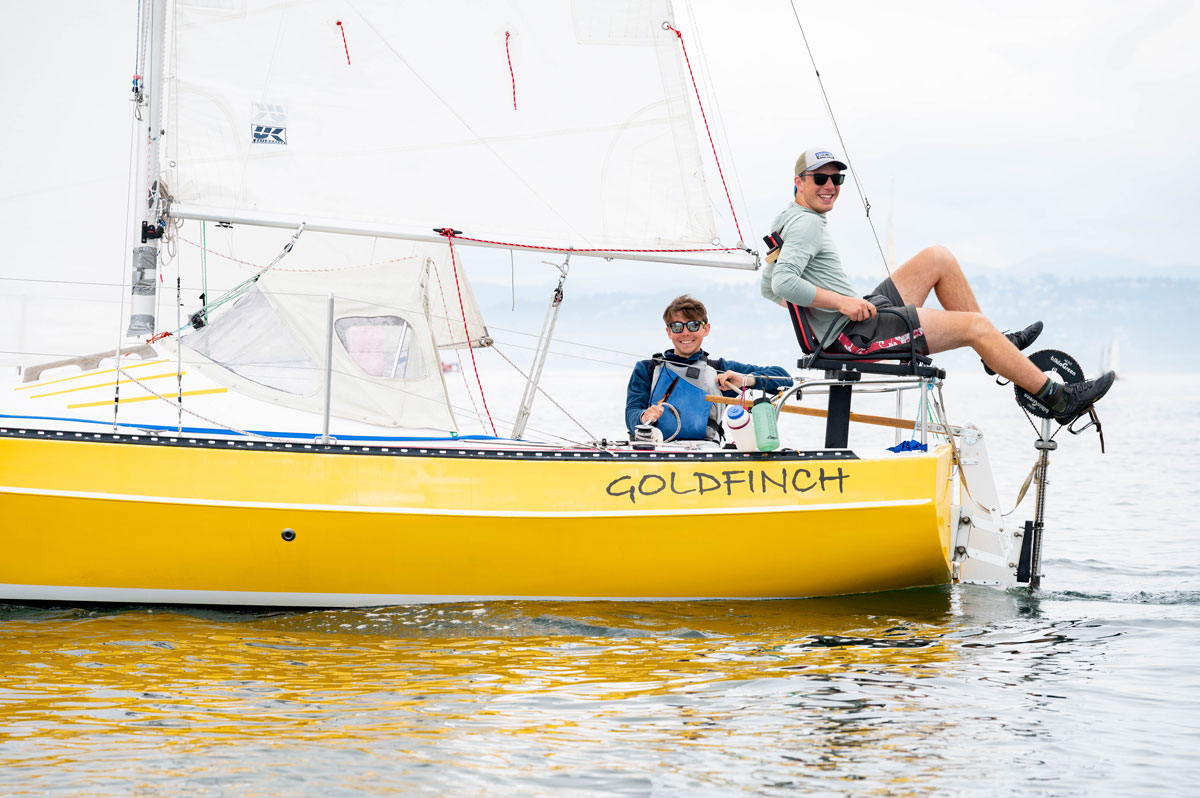
Day 13: Dinghy sailors smile ‘til it’s true
Field Report photo: Team Goldfinch by Rebecca Ross Nine teams are still hunting for the engineless version of the gas pedal, and one ticked off their last mile to Ketchikan yesterday. Caleb McDaniels and Sam Bonauto of Team Goldfinch picked up 13th place after a night anchored extremely close to Ketchikan—claims of adverse current abound,…
Continue Reading Day 13: Dinghy sailors smile ‘til it’s true
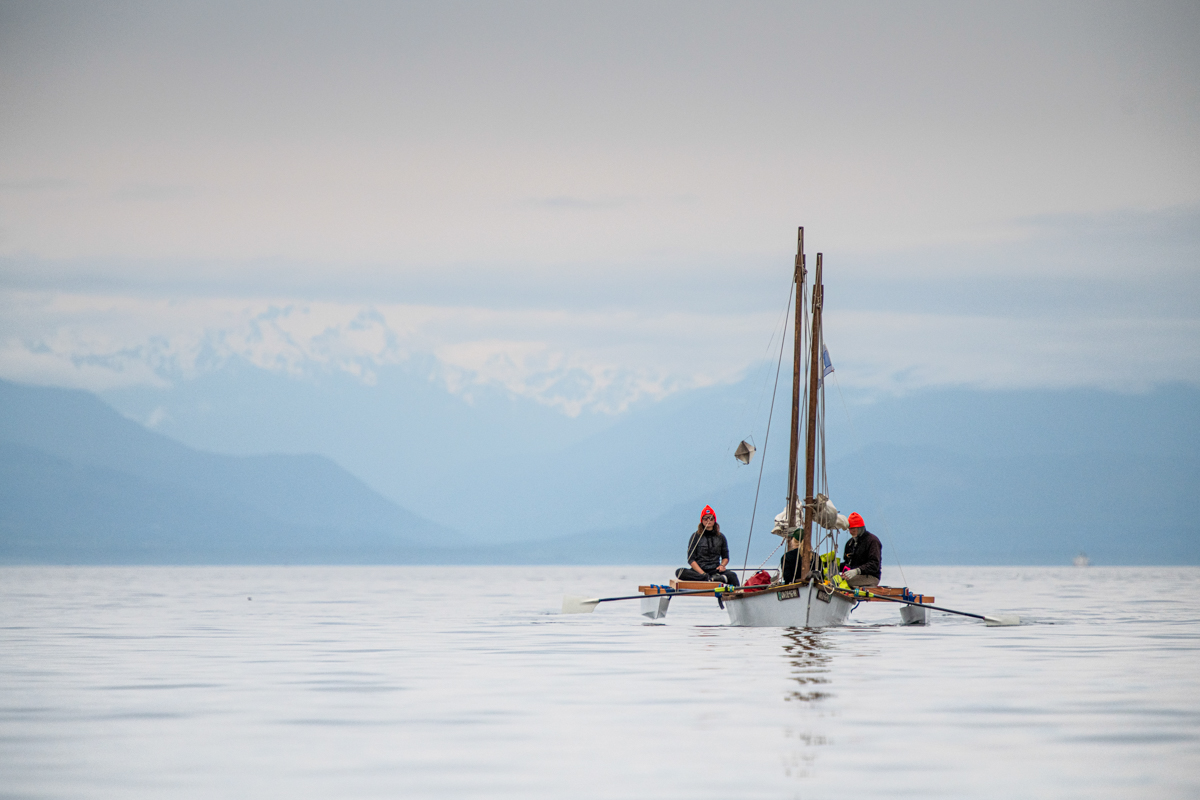
Day 12: Life by the drop; the other you and four-letter weather
Field Report photo: Team Sockeye Voyages by Jim Meyers 42 years of combined therapy taught us everything to ensure a fulfilling life can be found on the internet. Like on this page—where the curative hand of our beloved bodhisattva Gwyneth Paltrow is obviously felt. However, amidst the mental salve of “Intuition can guide you in…
Continue Reading Day 12: Life by the drop; the other you and four-letter weather

Day 11: Team Loustic, pronounced like glue stick
24-hour Fact Sheet photo: Team Loustic SuperSonic by Lynnette Oostmeyer Let’s be clear: there are dumber ways to get to Alaska. For the few hundred words between here and whatever version of “R2AK, out” we see ourselves smug enough to use as our puffed-up sign-off, it’s more than likely that these keys and fingers are…
Continue Reading Day 11: Team Loustic, pronounced like glue stick
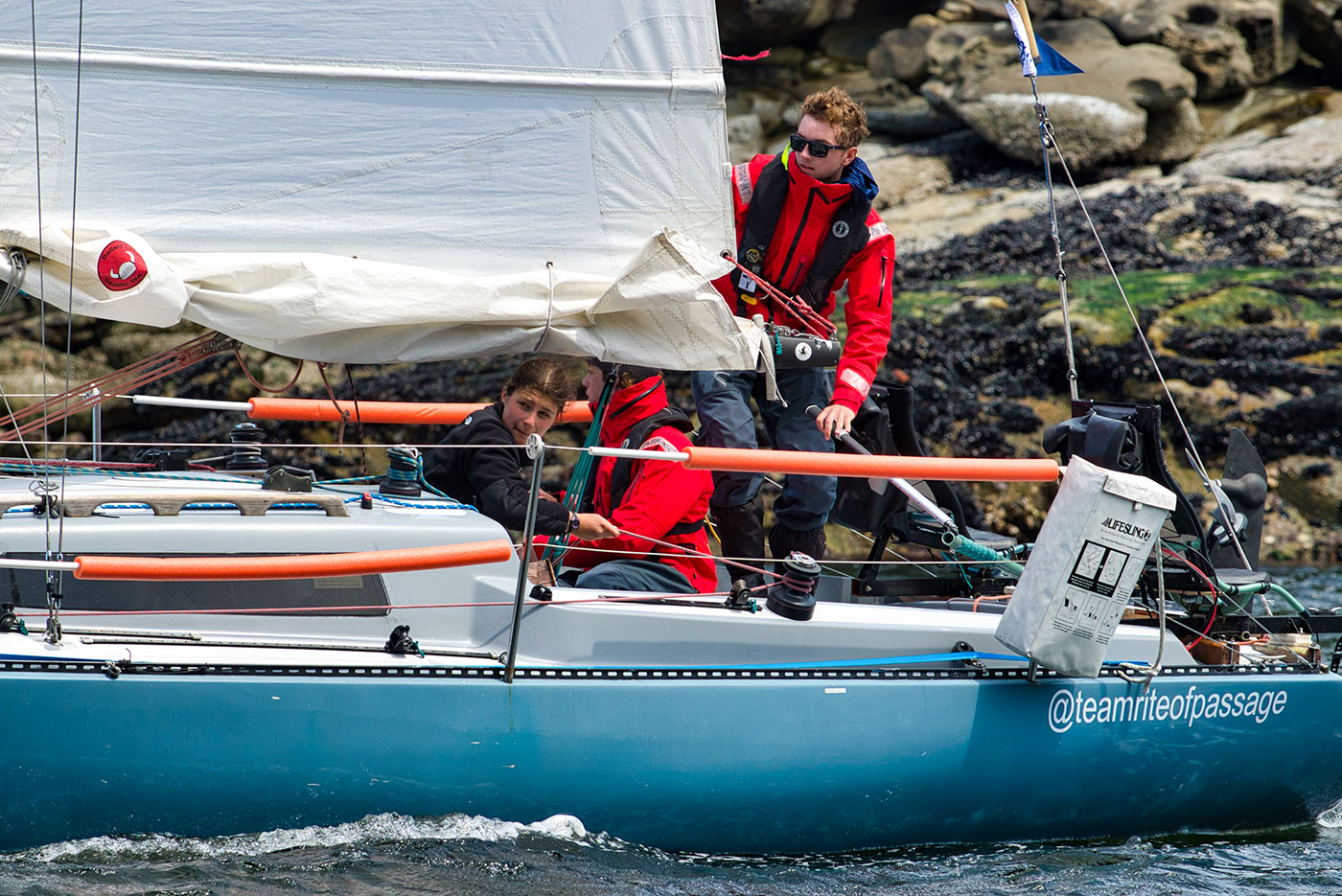
Day 10: Mustang Survival’s Team Rite of Passage: I’m not crying, you’re crying
photo: Mustang Survival’s Team Rite of Passage by Michael Dougherty Update by the Race Boss Three teams made it to Ketchikan in the last 24(ish) hours at time of writing, starting with Mustang Survival’s Rite of Passage, Wraith 2AK, and ending with Rho Your Boat making a just-past-midnight landing looking a little too fresh for…
Continue Reading Day 10: Mustang Survival’s Team Rite of Passage: I’m not crying, you’re crying
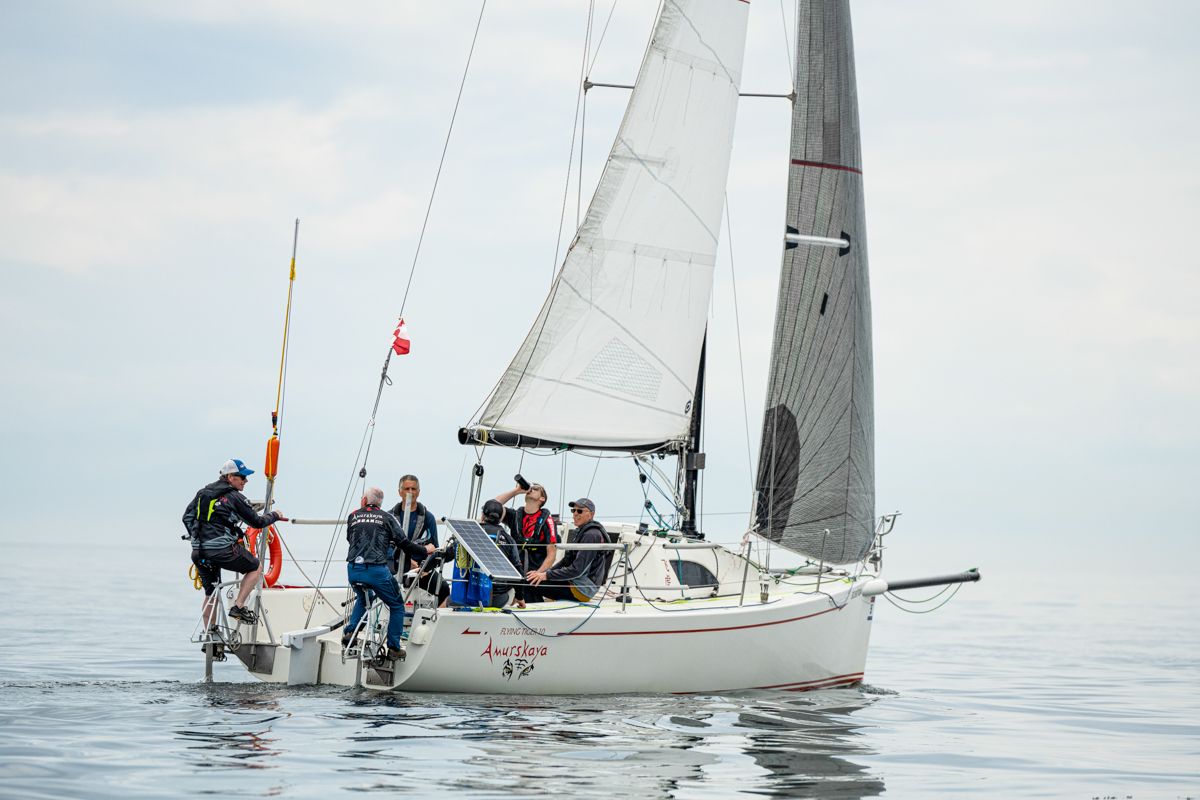
Day 9: Moon shots, time-traveling, and a human named Odin
Field Report | 24-hour Fact Sheet photo: Team Kootenay Pedalwheelers by Jim Meyers Update by the Race Boss Day 9 in Ketchikan—with mercury high-fiving the 70º mark—started seeing the R2AK reunion in full swing with ten teams now in, two of them late/early enough today to find themselves wrangled into the total. Mere miles from…
Continue Reading Day 9: Moon shots, time-traveling, and a human named Odin
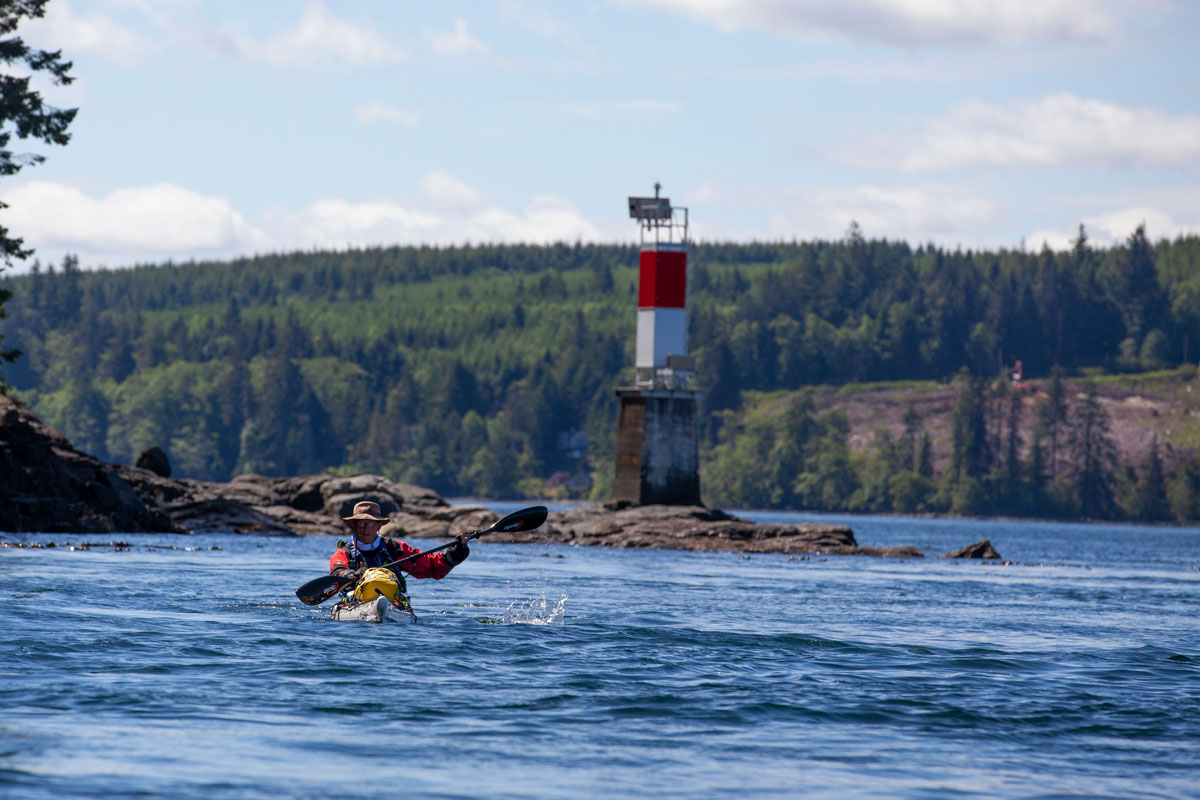
Day 8: Fish and chips, steak knives, itchy bits
Field Report photo: Team Zen Dog by Lynnette Oostmeyer Whether it takes four days or 24, Racing to Alaska is a feat done largely in isolation; self-contained human pods floating along at least miles but often horizons away from the closest team. Even when on the tracker they look like they’re right on top of…
Continue Reading Day 8: Fish and chips, steak knives, itchy bits
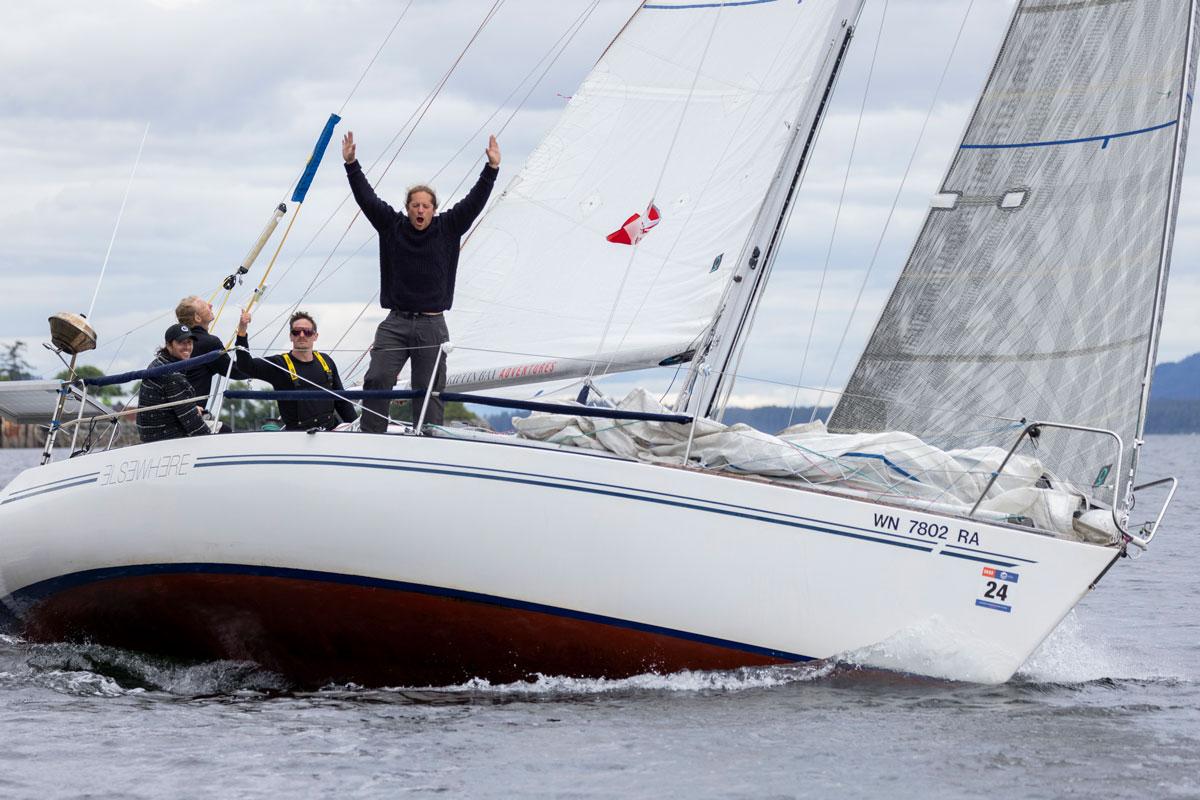
Day 7: STEAK KNIVES, Miller Lite engineering, R2AK media loses our GD minds
Field Report photo: Team Elsewhere by Thomas Hawthorne There are plenty of ways to Race to Alaska. Brute strength, brilliant tactics, and reveling in the full experience of the coastline are at least a few. If you take it on faith that Team Pure and Wild’s winning time is the extreme end of proficiency, the…
Continue Reading Day 7: STEAK KNIVES, Miller Lite engineering, R2AK media loses our GD minds
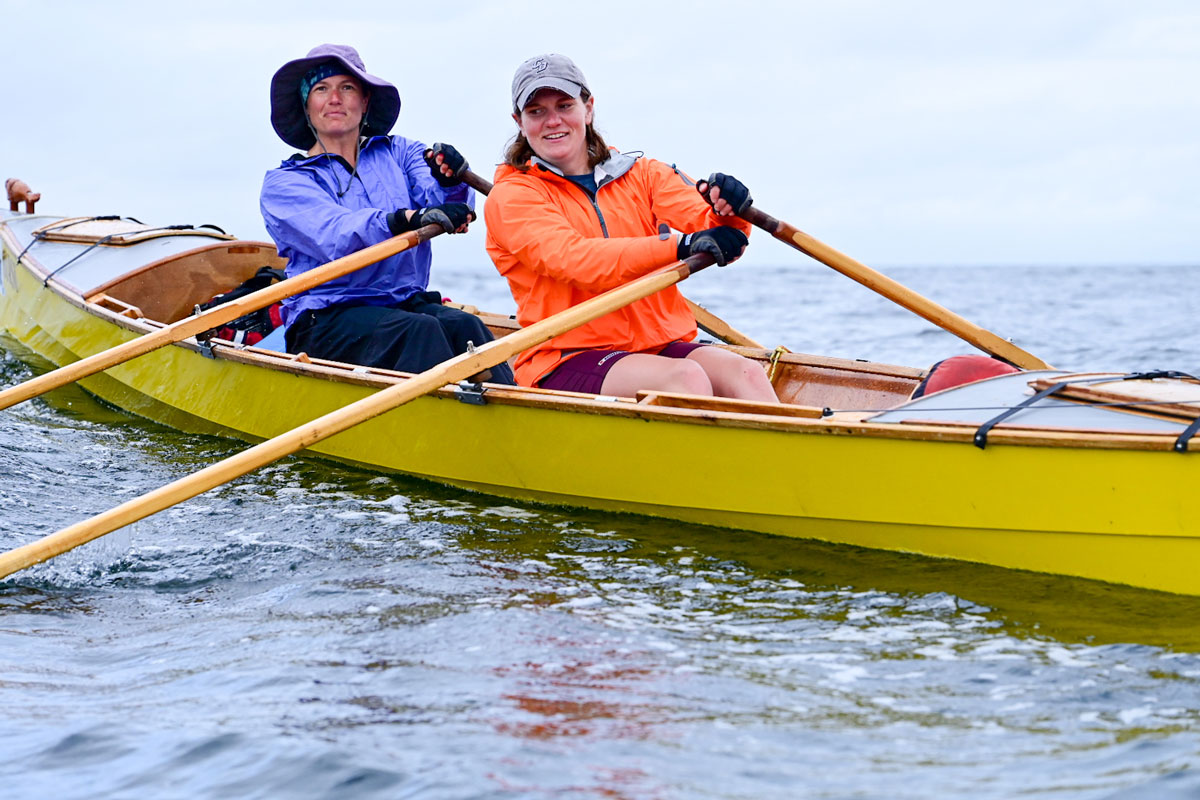
Day 6: Bookies, prize fighting, and acid rap to eat with
24-Hr Fact Sheet photo: Team Don’t Tell Mom by Rebecca Ross Update by Race Boss The bookies over at the Ketchikan Chamber of Commerce are divvying up the cash stakes everyone laid on the off chance they would be the ones to precisely predict the arrival time of first place. The total winnings are undisclosed,…
Continue Reading Day 6: Bookies, prize fighting, and acid rap to eat with
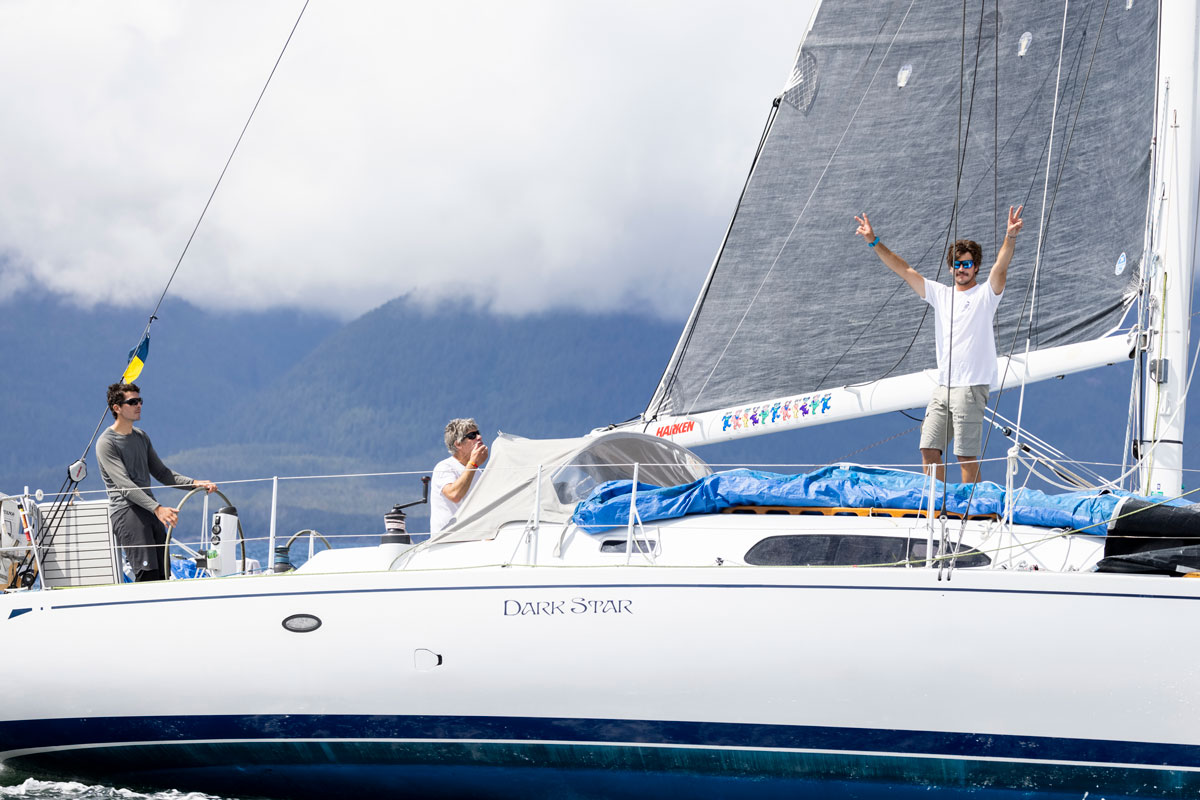
Day 5: Pure and Wild for the win, secret weapons, breakfast lasagna
Field Report | 24-Hr Fact Sheet photo: Team Pure and Wild by Thomas Hawthorne It’s been years since Ketchikan welcomed R2AK’s finishers to its shores, but by the early hour of Team Pure and Wild’s crossing of Dixon Entrance, you could tell that things were happening in welcomed and familiar ways. As their tracker blip…
Continue Reading Day 5: Pure and Wild for the win, secret weapons, breakfast lasagna
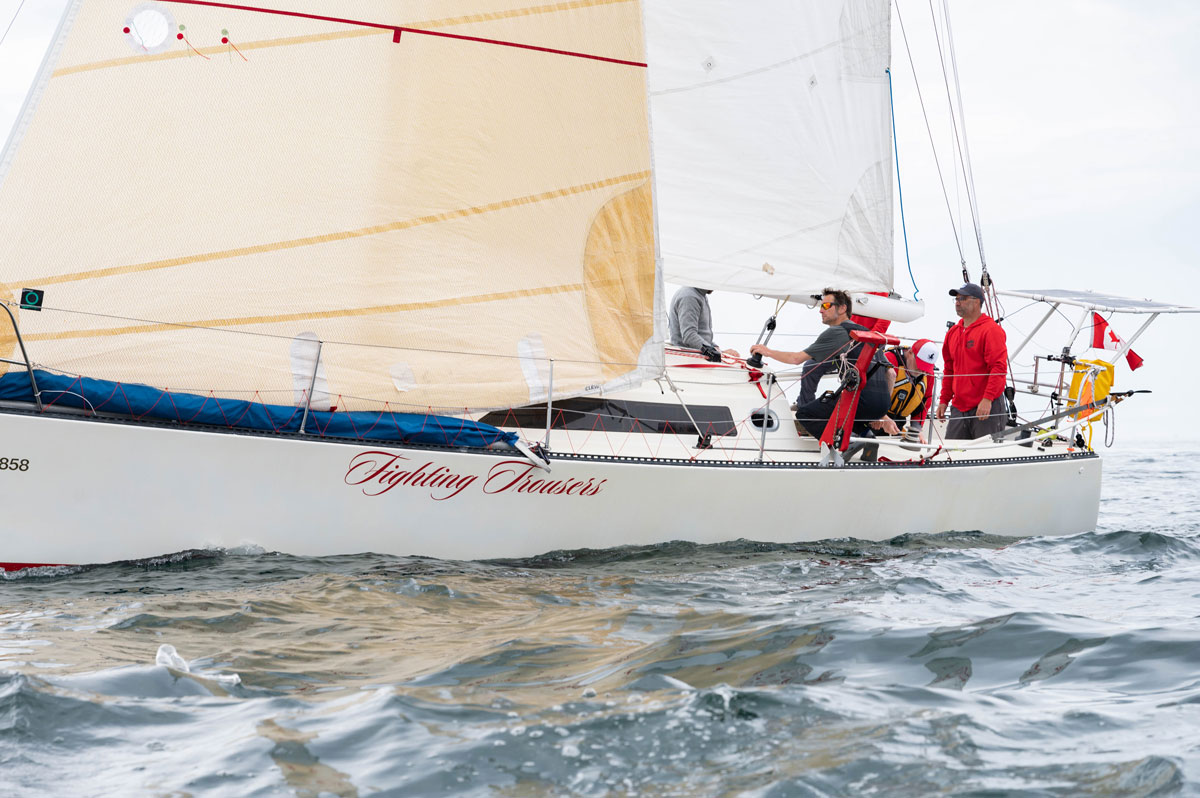
Day 4: Midterms, more departures, and monohulls look to sweep
Field Report | 24-Hr Fact Sheet photo: Team Fashionably Late by Rebecca Ross Team Pure and Wild continues their downwind romp after passing Bella Bella in Day Three’s early morning hours. God and driftwood willing, it looks like they’ll mow down the miles and arrive in Ketchikan midday today. Since mileage-wise Bella Bella is effectively…
Continue Reading Day 4: Midterms, more departures, and monohulls look to sweep
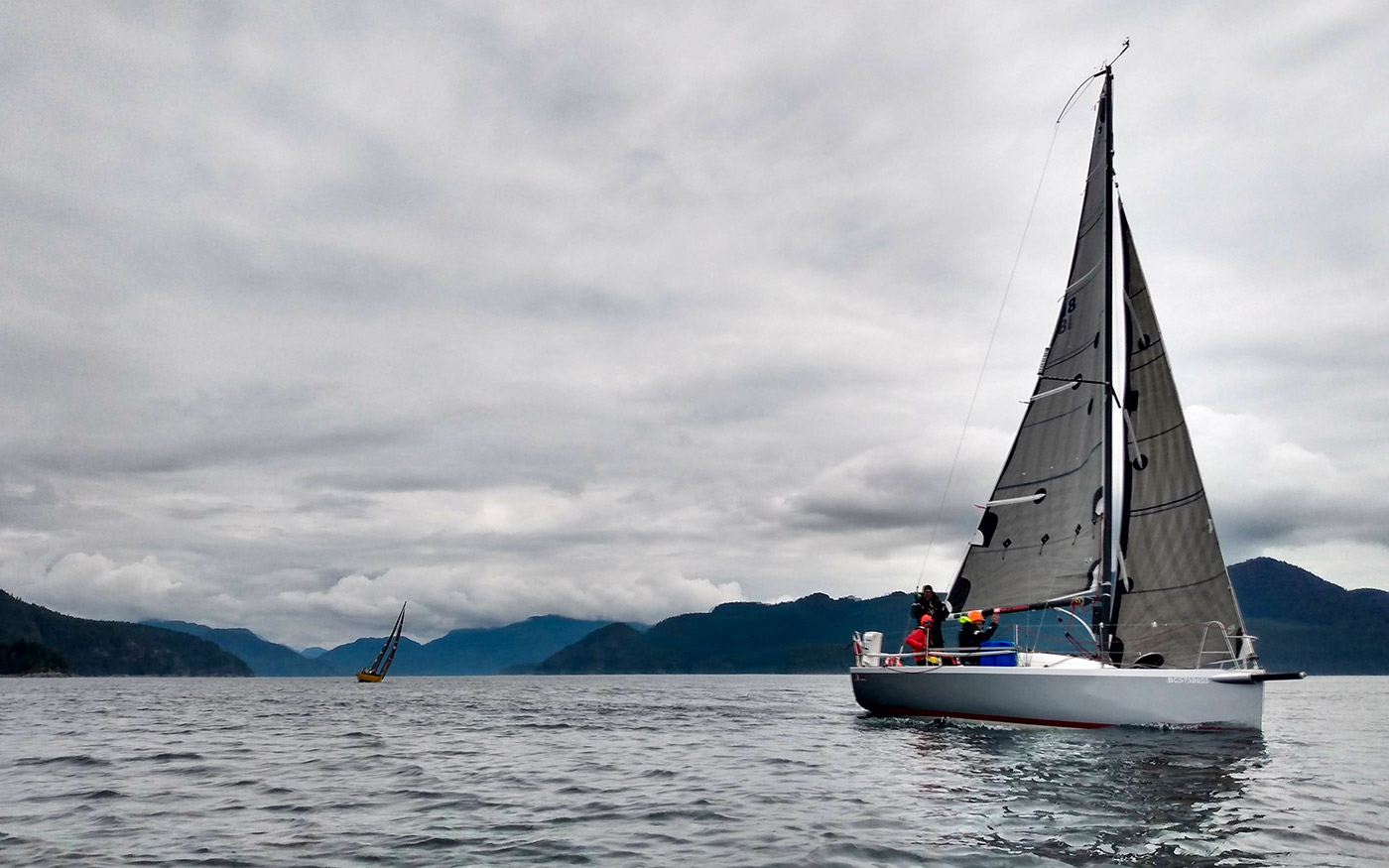
Day 3: Big milestones, everyone finds their race, unknowing runs rampant
Field Report photo: Teams Wraith 2AK and High Seas Drifters by Laura Bennett Before we get to the daily dose of R2AK’s blathering fever dream, we need to set the record straight: if you don’t know, we probably don’t either. To be clear: we are hustling. Up and down R2AK’s elongating geography, we’re hustling via…
Continue Reading Day 3: Big milestones, everyone finds their race, unknowing runs rampant
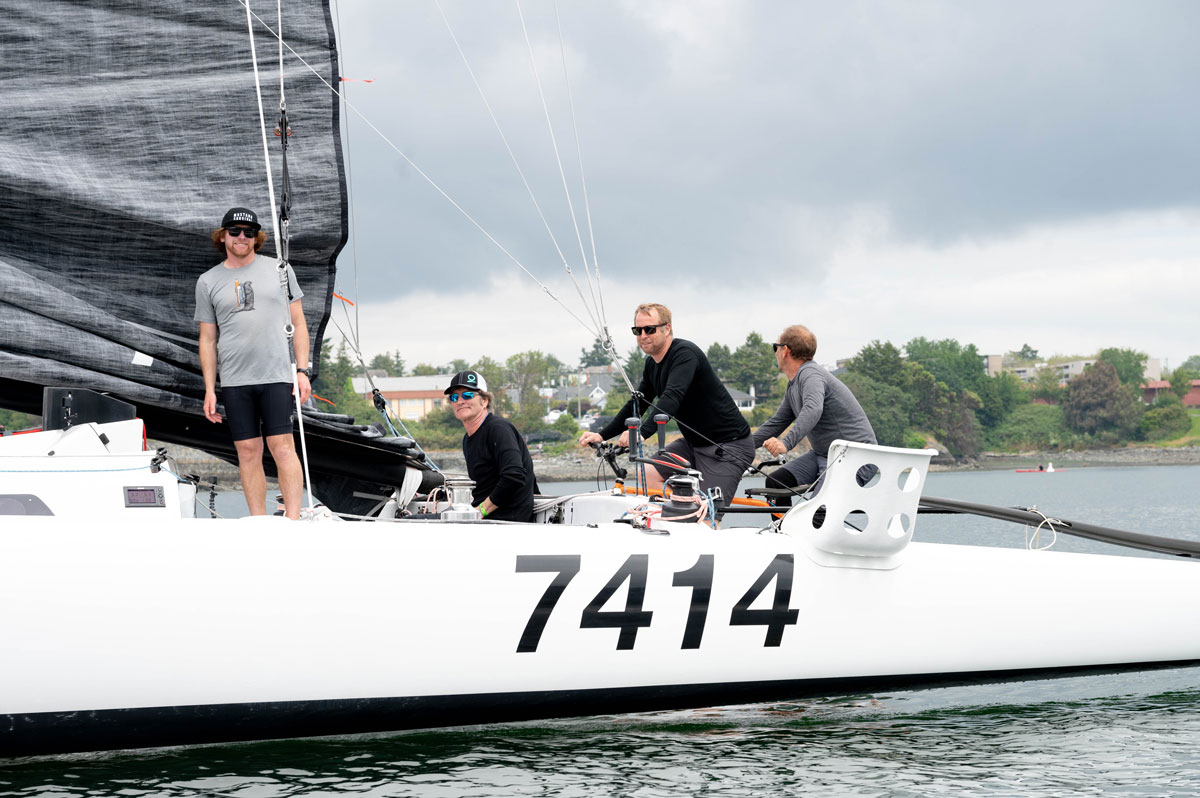
Day 2: The lumber games
Video | 24-Hr Fact Sheet photo: Team Malolo by Rebecca Ross If BC’s timber industry cheerleaders are to be believed, British Columbia accounts for roughly 40% of Canada’s softwood lumber production. If racers, media boats, and the coastal BC community of pro mariners are to be believed, roughly 40% of that annual production is floating…
Continue Reading Day 2: The lumber games
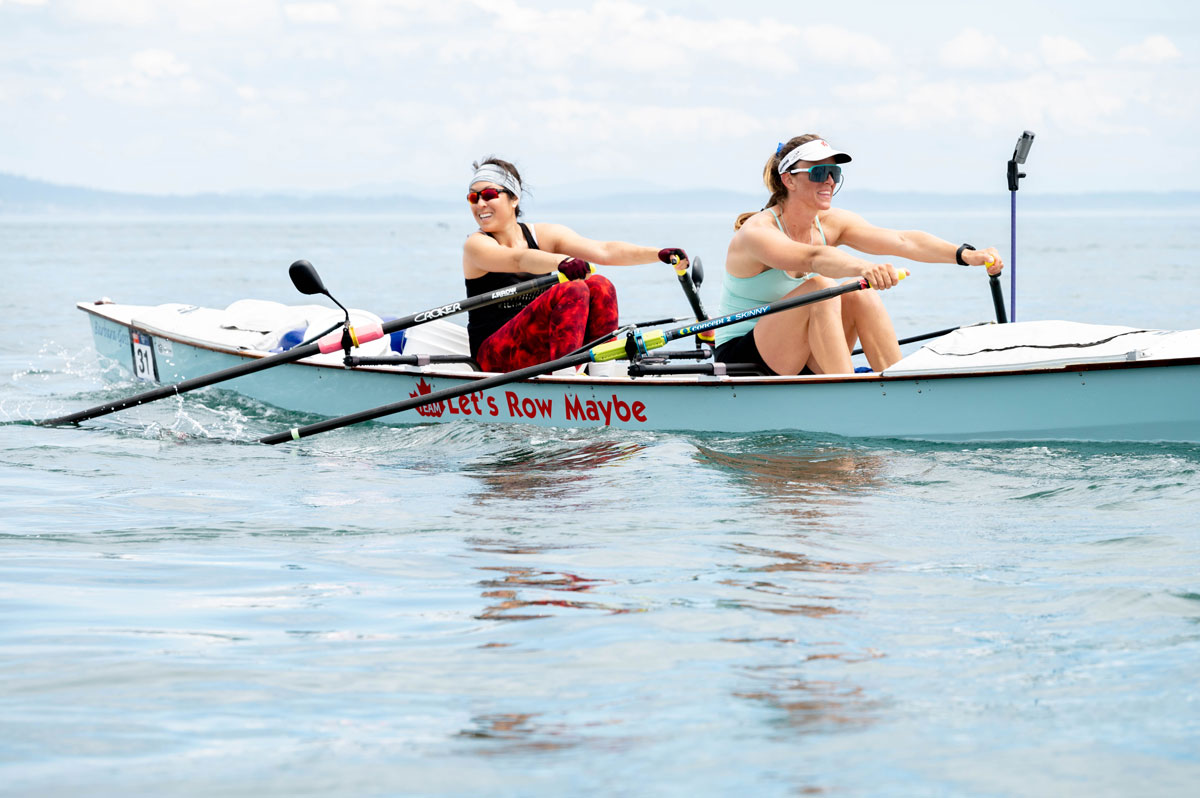
Day 1: Casting off and our chakras begrudgingly do a yoga
Field Report | 24-Hr Fact Sheet photo: Team Let’s Row Maybe? by Rebecca Ross While all of us here in R2AK’s Mobile Command will deny it and fight you if you press the point, even as we cringe at what might politely be called “Hippy Shit,” we’ll begrudgingly concede that there are moments in life…
Continue Reading Day 1: Casting off and our chakras begrudgingly do a yoga
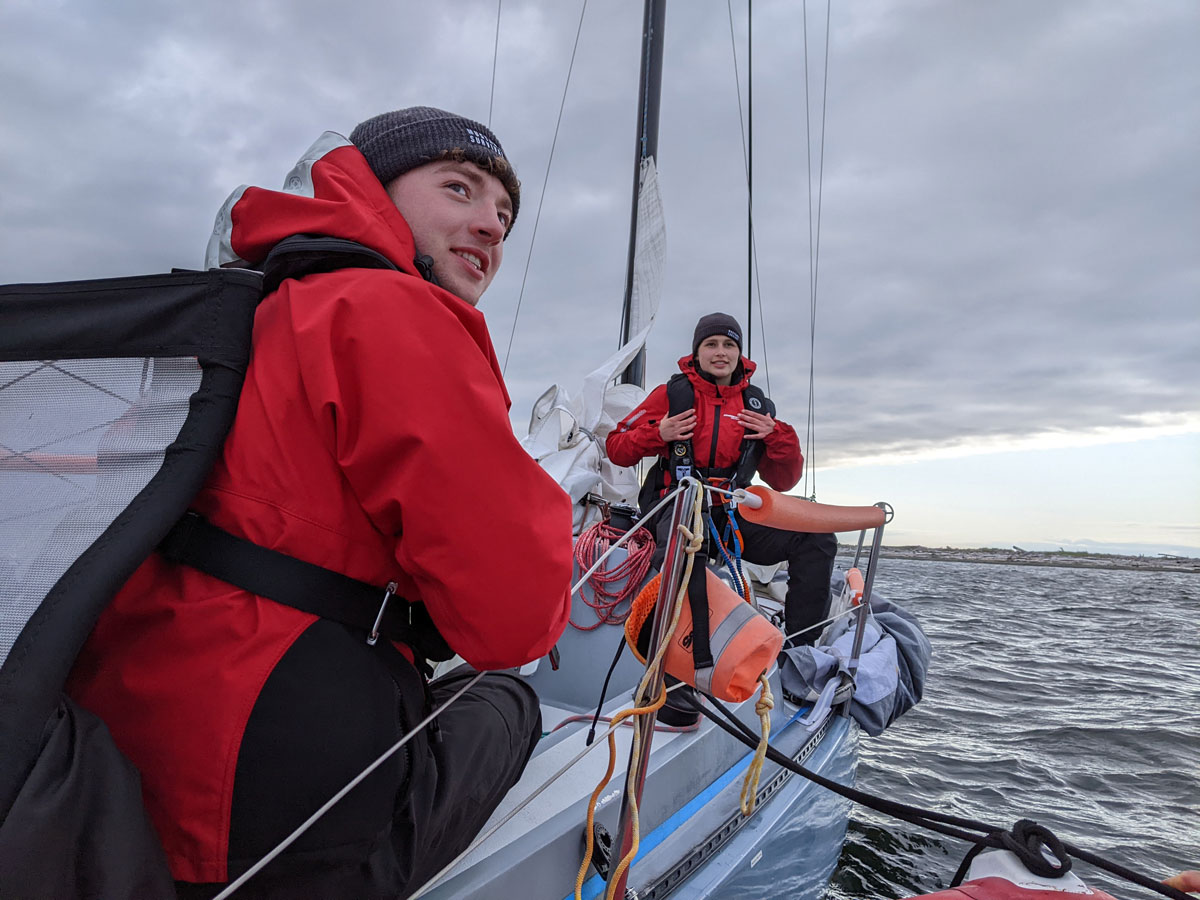
Stage 1, Day 3: Water is different, the Great Canadian paddlewheel race
Field Report photo: Mustang Survival’s Team Rite of Passage by Lynnette Oostmeyer To state something that sounds as stupid as it potentially is, water is different than land. Go ahead, smart-aleck away with all the versions of “No shit, Sherlock” that are running through your head right now. We earned it. Once you’ve got it…
Continue Reading Stage 1, Day 3: Water is different, the Great Canadian paddlewheel race
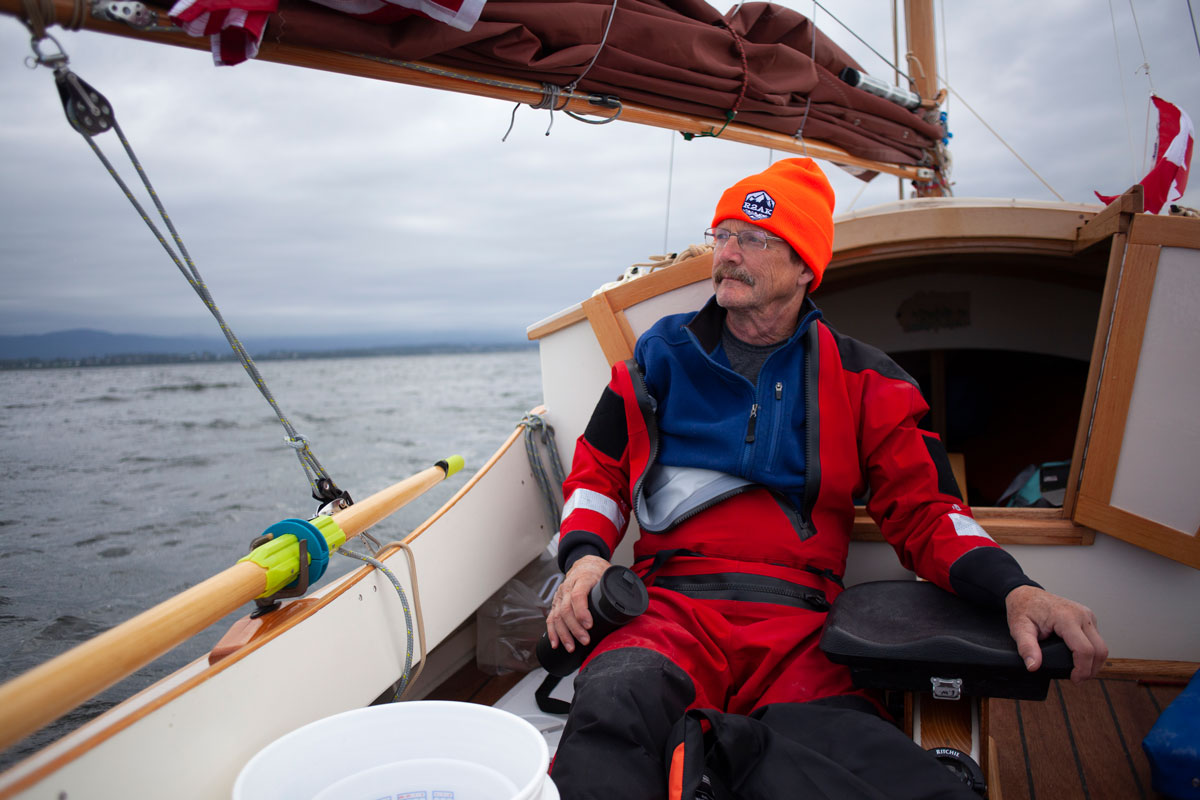
Stage 1, Day 2: Brunch fatigue, learning curves, and the citizens of Dungeness Spit
Field Report photo: Team Dark Star by Lynnette Oostmeyer If your day was anything like ours, the second day of the R2AK 2022 started with a 5 am call with the Coast Guard just to make sure things hadn’t gotten worse. TL;DR: They hadn’t. Talk to The Man, then peel back the eyelids with cup…
Continue Reading Stage 1, Day 2: Brunch fatigue, learning curves, and the citizens of Dungeness Spit
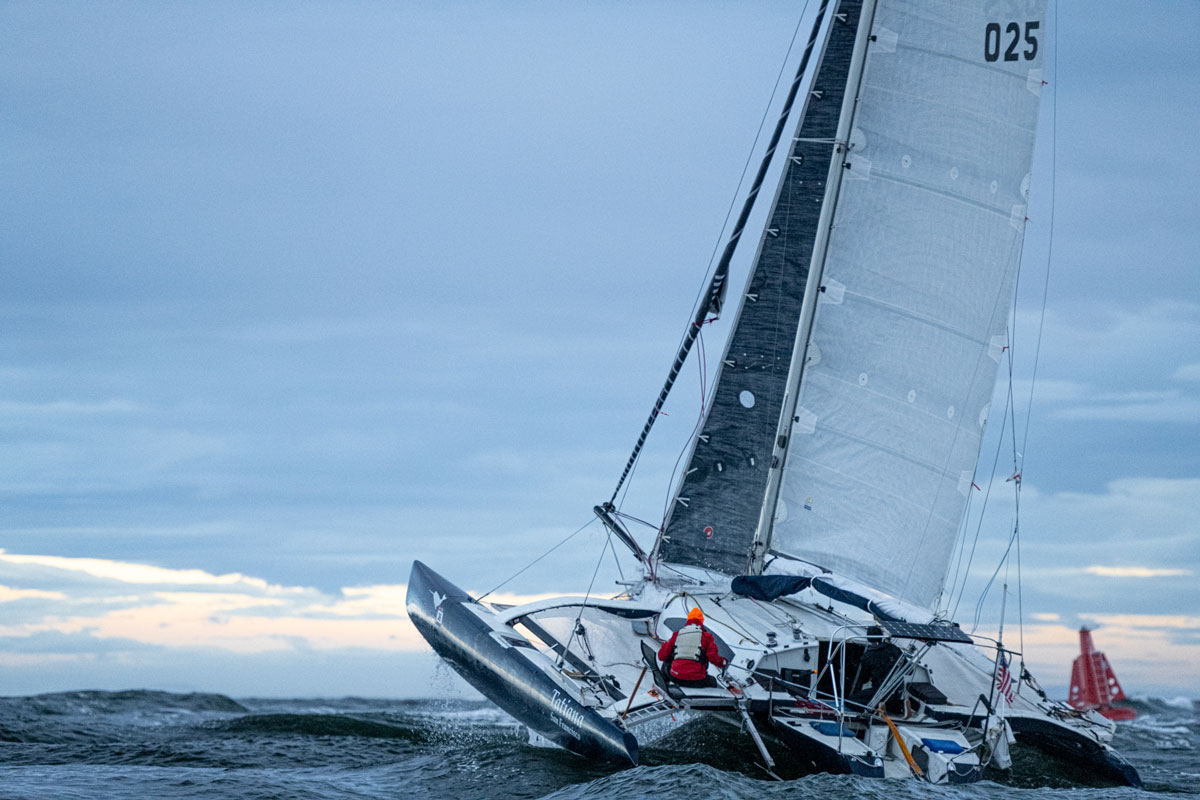
2022 Stage 1, Day 1: The fast, the smart, and the broken
Field Report photo: Team Narwhal by Jim Meyers First, most important: everyone is ok. Us, you, 100% of this year’s racers, and the brave men and women of the US Coast Guard and R2AK support vessels that affected four rescues in the Race’s first four hours. Everyone is ok. Bruised egos, dashed dreams, but body…
Continue Reading 2022 Stage 1, Day 1: The fast, the smart, and the broken
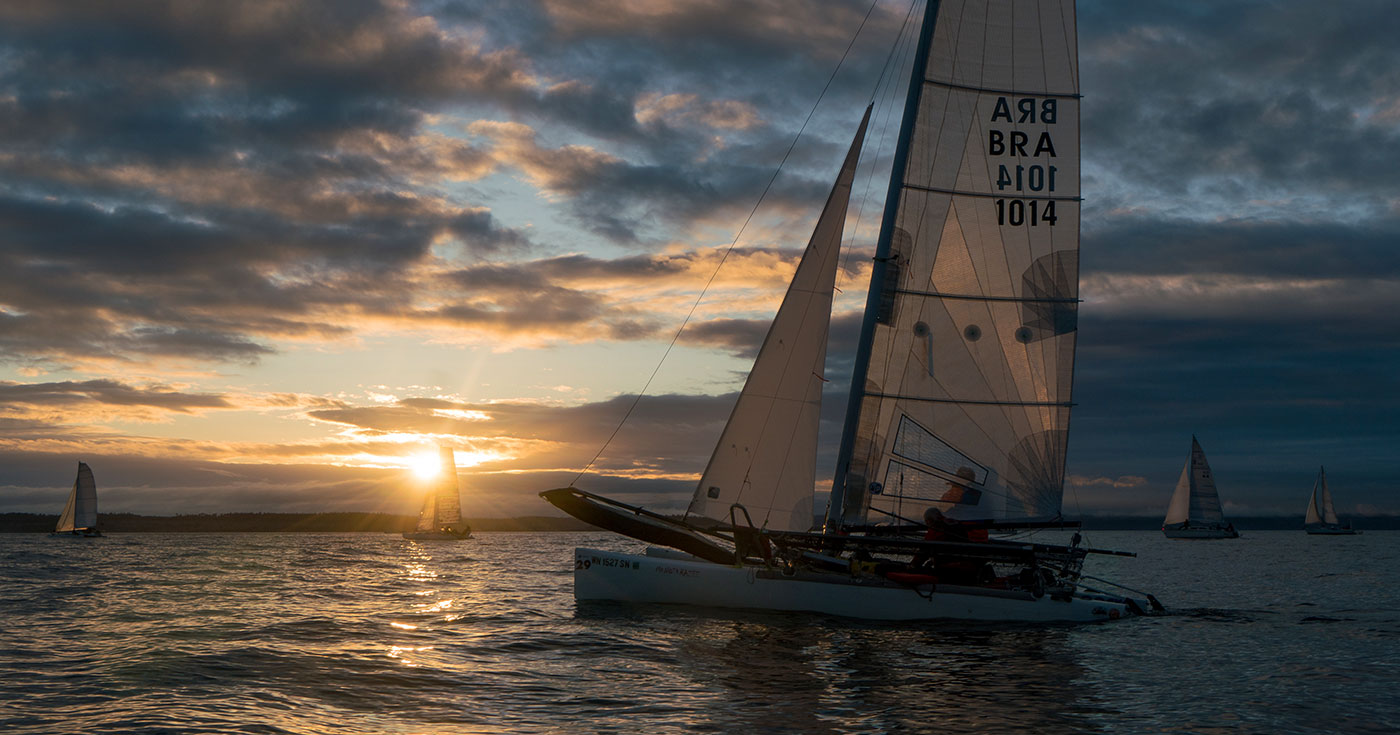
Pre-Race Update: Ready, set, R2AK
We’re back. 829 days since the world was cancelled by the murder sneeze, R2AK Central is shaking off the cobwebs and getting back in the saddle for a long delayed year of engineless hard charging to Alaska. Thank god. Deep in R2AK’s command bunker we’re Rip Van Winkling our way out of forced hibernation. Our…
Continue Reading Pre-Race Update: Ready, set, R2AK
Need free advice? Talk with a Personal Cruise Consultant.
Popular Searches
Share this article, stay updated, 2024 alaska cruise season kicks off with sailaway events.
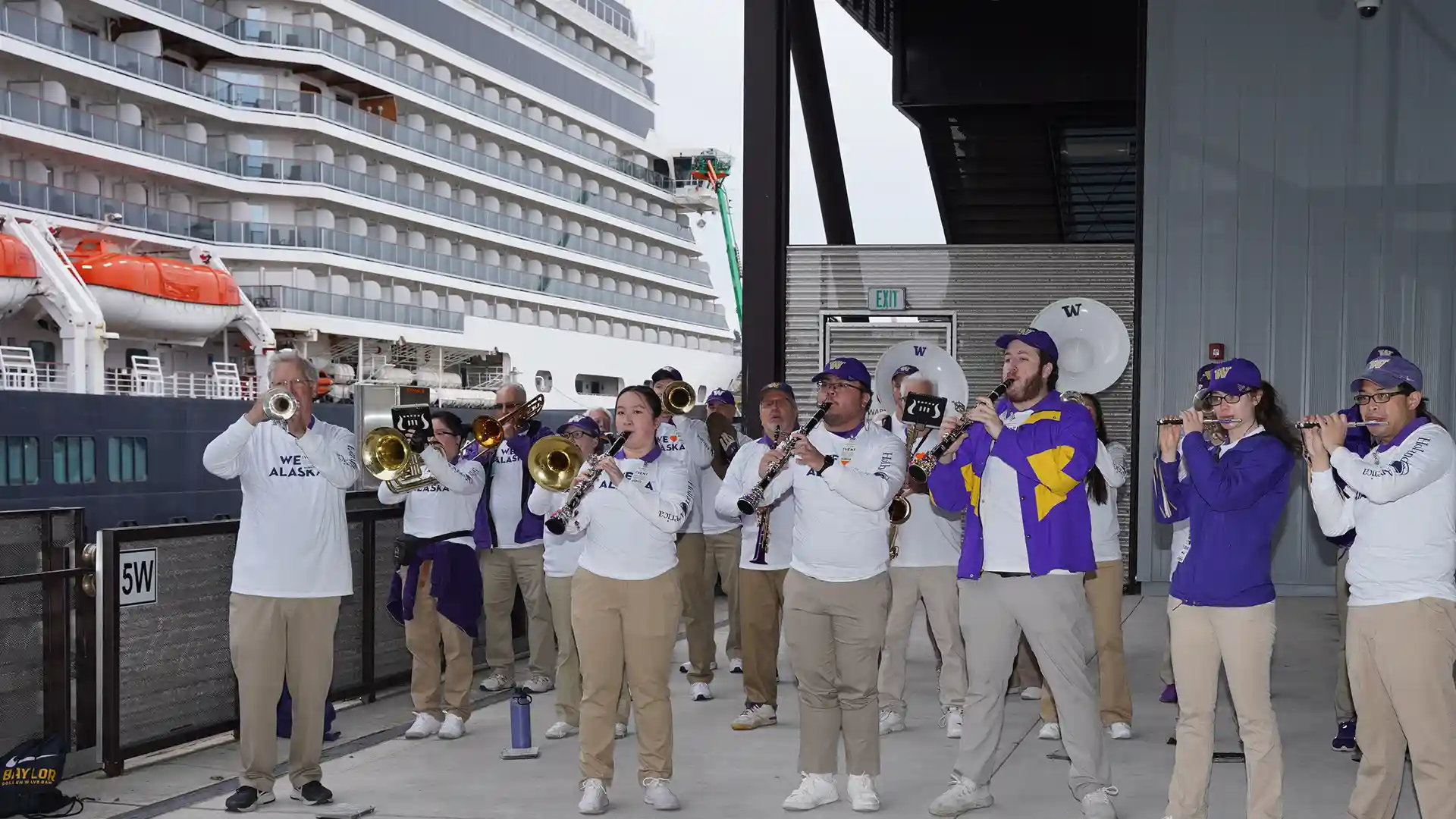
At Holland America Line, we love Alaska, from its glorious glaciers and wildlife views to its magnificent landscapes. There are a lot of sights to soak up when cruising to the Great Land, which is why we get so excited when Alaska cruise season rolls around. To kick off our 2024 Alaska cruise season, we recently celebrated through special sailaway events on April 27 in Vancouver and May 4 in Seattle.
Festive Events Celebrate Alaska Cruise Season
Coinciding with King’s Day, a cherished holiday tradition in The Netherlands honoring the birthday of the reigning Dutch monarch, our Vancouver event was especially festive and fun. We announced our new Dutch Day activities at sea, which includes a Dutch Dinner experience, Stroopwafel delights before bedtime and our beloved Orange Party. In a nod to our Dutch heritage, Consul General of the Netherlands in Vancouver Sebastiaan Messerschmidt also joined us at the sailaway event to speak about the role Holland America Line had in bringing immigrants to Canada, especially those from The Netherlands.
In Seattle, guests were greeted with performances from members of the University of Washington Alumni Band. Holland America Line Captain Jeroen van Donselaar also presented a large model of Nieuw Amsterdam, one of our cruise ships, to the Port of Seattle in recognition of our longstanding partnership. This year alone, Seattle will experience 38 calls to port for cruisers embarking on journeys to Alaska, each contributing about $250,000 to the local economy.
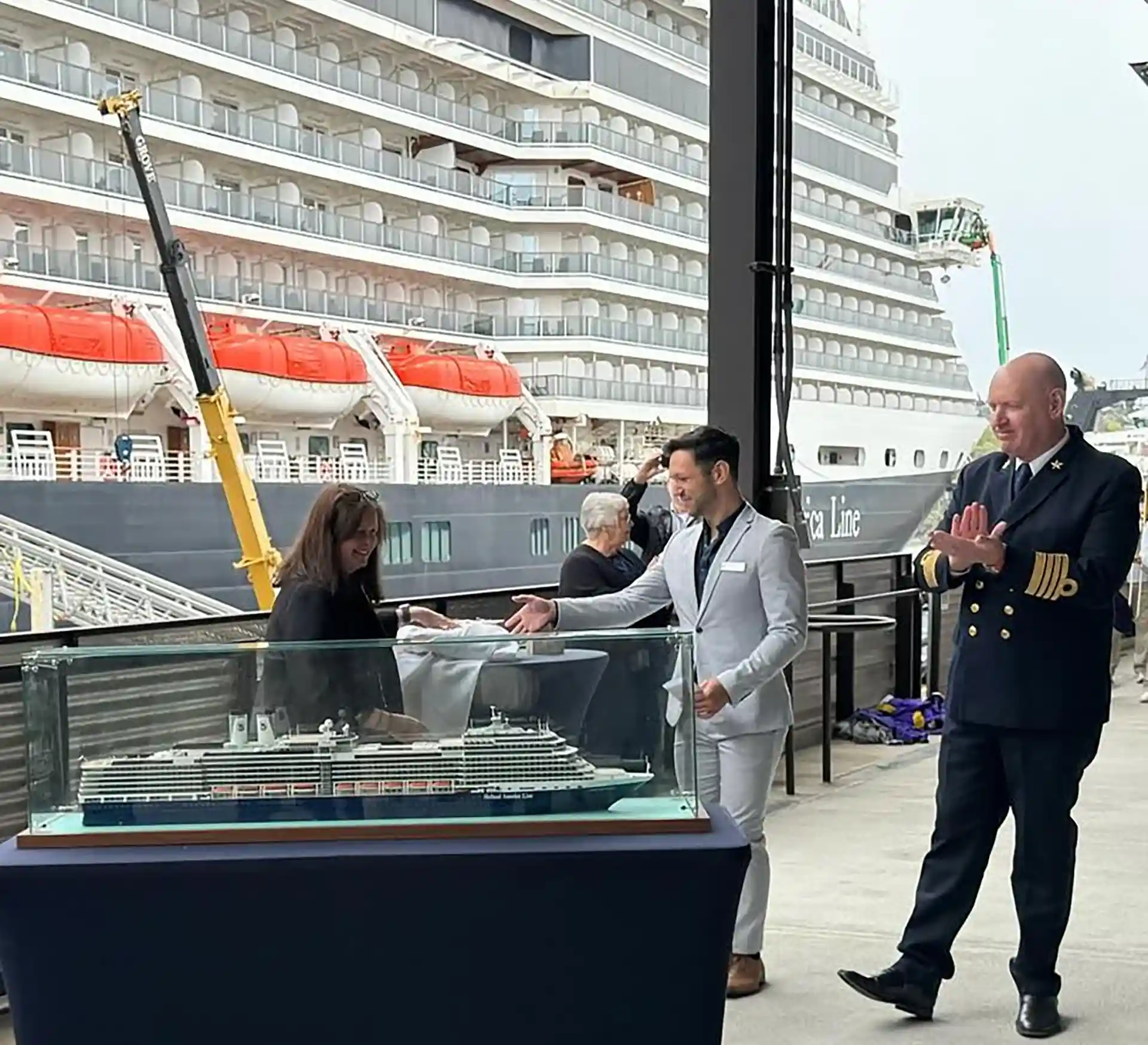
Our 2024 Alaska Cruise Season
We’ve been showcasing the breathtaking wonders of Alaska since 1947, marking 2024 as the 77 th year Holland America Line has sailed to the Great Land. New this year is our Glacier Guarantee ™. We know experiencing the icy giants of Alaska is as much a highlight for guests as it is for us. If we don’t visit a glacier during your Alaska journey, you’ll receive a Future Cruise Credit equal to 15% of your cruise fare. Don’t sweat it though! We know Alaska glaciers very well.
You’ll also make memories during our Glacier Day activities, with scenic commentary, presentations, informational viewing stations, photo opportunities, Dutch Pea Soup on deck, Glacial Ice cocktails, insightful talks by Glacier Bay National Park Service Rangers, and an open bow for viewing.
In addition to glaciers, you’ll have more opportunities to experience Alaska wildlife with Holland America Line than with any other cruise line. We even carry a wildlife expert on board to help you witness the majestic animals found in Alaska, including whales, eagles, bears, moose, otters, seals, sea lions and more.
From our Alaska cruises to our incredible Alaska cruisetours , you’re sure to experience the amazing culture, cuisine and awe-inspiring landscapes of the Great Land.
Is Alaska calling you? Connect with one of our Personal Cruise Consultants to begin planning your unforgettable journey today.
Article by Kirk Baruth & Lesley McMillen
Join the Discussion
Leave a comment cancel reply.
Save my name, email, and website in this browser for the next time I comment.
Sign up for special offers and announcements
Related Articles

Son Makes Mom’s Dream Come True with Europe Cruise
Read article.

Employee’s Passion for Teaching Inspires Careers at Sea
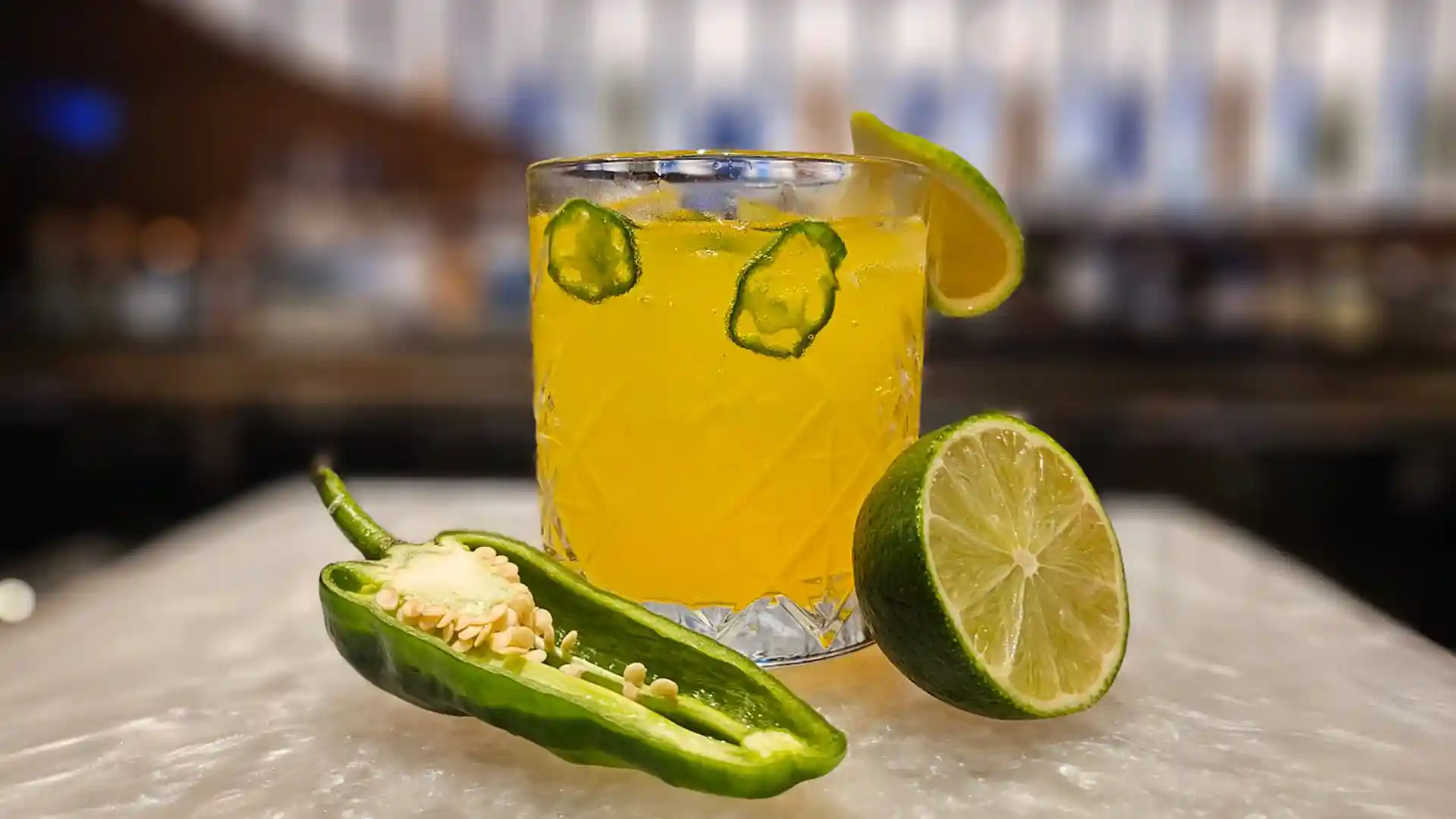
Celebrate Cinco de Mayo with these Refreshing Cocktails
Sign up for special offers, travel is our tradition.
Since 1873 | Sailing 150 years
Navigator Mobile App
Plan activities, purchase shore excursions, make reservations and more right from your phone while on board.


COMMENTS
Race to Alaska is a project of the Northwest Maritime Center in Port Townsend, WA, a 501(c)(3) non-profit organization whose mission is to engage and educate people of all generations in traditional and contemporary maritime life, in a spirit of adventure and discovery.
The Race to Alaska (R2AK) is an annual 750-mile adventure race from Port Townsend, Washington up the Inside Passage to Ketchikan, Alaska. Any form of boat is allowed, so long as it has no motors. ... First Federal's Sail Like A Girl 31.8' (9.7m) Mono - Melges 32 7 6d 13h 17m 2019 Angry Beaver - Skiff Sailing Foundation 40.0' (12.2m) Mono ...
The Race to Alaska starts at Port Townsend, British Columbia, and runs 750 miles to Ketchikan, Alaska Gray Wolf is Jeanne and Ev Goussev's family boat, a 40ft monohull built in 1995 from cold ...
Now ready to stream nationally from the warm and dry comfort of home, the Race to Alaska movie captures the spirit of this wild adventure up the Inside Passage. Called "The best worst idea", this is the true story of the Race to Alaska, the wildly challenging 750-mile engineless boat race from Port Townsend, Washington to Ketchikan, Alaska ...
The Race to Alaska is back on. The unpowered boat race from Port Townsend, Wash., to Ketchikan will start June 13 after two years of cancellations because of pandemic-related border closures.
An annual boat race that started Monday in Washington state has some pretty challenging rules - no motors, no support, 750 miles to the finish line in Alaska. People can sail, kayak, row. One ...
Race To Alaska The Hard Way. Jonathan McKee and his crew on the Bieker 44 take advantage of a new route in the Race to Alaska and reap the rewards. By Jonathan McKee. September 27, 2022. Matt ...
Mar 25, 2015. Few races have captured our imagination here at SAIL as much as the recently announced Race to Alaska ( R2AK ), which kicks off on June 4 in Port Townsend, Washington, and takes competitors to Ketchikan, Alaska, a distance of 750 miles, with a one-day pit stop in Victoria, British Columbia. The R2AK is open to any vessel that ...
The Race to Alaska — a 750-mile, engineless, unsupported boat race from Port Townsend, Wash., to Ketchikan — is back after a two-year hiatus due to the coronavirus pandemic. First place wins ...
Original: Jan 26, 2015. In the Pacific Northwest, sailing can be an adventurous affair. Take, for example, the inaugural Race to Alaska, which starts June 4 in Port Townsend, Washington, and runs 40 miles to a one-day pit stop in Victoria, British Columbia (read: the shakedown qualifier), before punching some 710 miles north to Ketchikan, Alaska.
Boats sail in rough weather near the start of the 2022 Race to Alaska. (Photo by Liv von Oelreich, courtesy of Northwest Maritime Center) Rowboats, kayaks and racing sailboats cast off Monday from ...
So of course both happened simultaneously last month, on Day 3 of the Race to Alaska, as Sail Like a Girl, an all-women's team from the Seattle area, was sailing through Johnstone Strait, a ...
Published on September 8th, 2023. The 8th edition of the Race to Alaska (R2AK) returns again in 2024 for the 750 mile course from Port Townsend, WA to Ketchikan, AK. But unlike the 2022 and 2023 ...
The R2AK is a 750-mile engineless adventure race from Port Townsend, Washington, to Ketchikan, Alaska. Sail- and human-power provide the propulsion, with platforms ranging from ultra-fast racing trimarans to stand up paddleboards.We, seeking a respectable podium finish, were aboard Scott's new Corsair 760 trimaran, Toast.The Corsair 760 evolved from the popular Corsair Dash 750.
A Northwest adventure race that some call "the best worst idea" has returned after a long, pandemic hiatus. The 2022 running of the Race to Alaska for engineless boats cast off at the first light ...
Barrett is a long-time Pacific Northwest musician (Screaming Trees, Mad Season, The Barrett Martin Group) as well as a Grammy award-winning producer. Barrett manned the backstay for Team New Zealand on an America's Cup race. Markus is a native of the Pacific Northwest, now immigrated to Australia. He established the veteran-led Disaster ...
The Race to Alaska will hold its 8th edition in 2024, continuing with its 750-mile course from Port Townsend, WA to Ketchikan, AK. And now there is a podcast series prior to the June 9 start.
There is an ongoing debate on whether the optimal boat will favor sail, oars, pedals, or paddles. If you're trying to win, you should know that it's always been a sailboat. ... Don't worry, we're legit. Race to Alaska is a project of the Northwest Maritime Center, a 501(c)(3) non-profit committed to engaging people in the waters of our ...
Joined by Bryce Lutz (19) and Willow Gray (18) from Bellingham, the team of four will compete in the first leg of the race on June 9, sailing 40 miles from Port Townsend to Victoria B.C., crossing ...
Anchorage mayoral candidate Suzanne LaFrance had a strong lead over incumbent Dave Bronson in preliminary runoff election results posted Tuesday night. Former Assembly chair LaFrance received 55% ...
The film follows the five-year history of the 750-mile race, also known as the R2AK, and is being heralded as "bracing, immersive and wonderfully congenial.". The R2AK, which has featured a surprising number of multihulls over the years, sends mariners and boats of all kinds from Port Townsend, Washington, to Ketchikan, Alaska.
Not ideal for sailing, but not a storm either. Those were the conditions at Seattle's Bell Harbor Marina as 11 sailing teams from around the world set off Friday in 70-foot ocean racing yachts ...
Pre-Race Update: Ready, set, R2AK. June 12, 2022. We're back. 829 days since the world was cancelled by the murder sneeze, R2AK Central is shaking off the cobwebs and getting back in the saddle for a long delayed year of engineless hard charging to Alaska. Thank god.
Our 2024 Alaska Cruise Season. We've been showcasing the breathtaking wonders of Alaska since 1947, marking 2024 as the 77 th year Holland America Line has sailed to the Great Land. New this year is our Glacier Guarantee ™. We know experiencing the icy giants of Alaska is as much a highlight for guests as it is for us.
Cruise Lines In Alaska. Most major cruise lines sail in Alaska, ranging from large, modern ships full of amenities, down to smaller, older ships with more outside space and a relaxed vibe ...